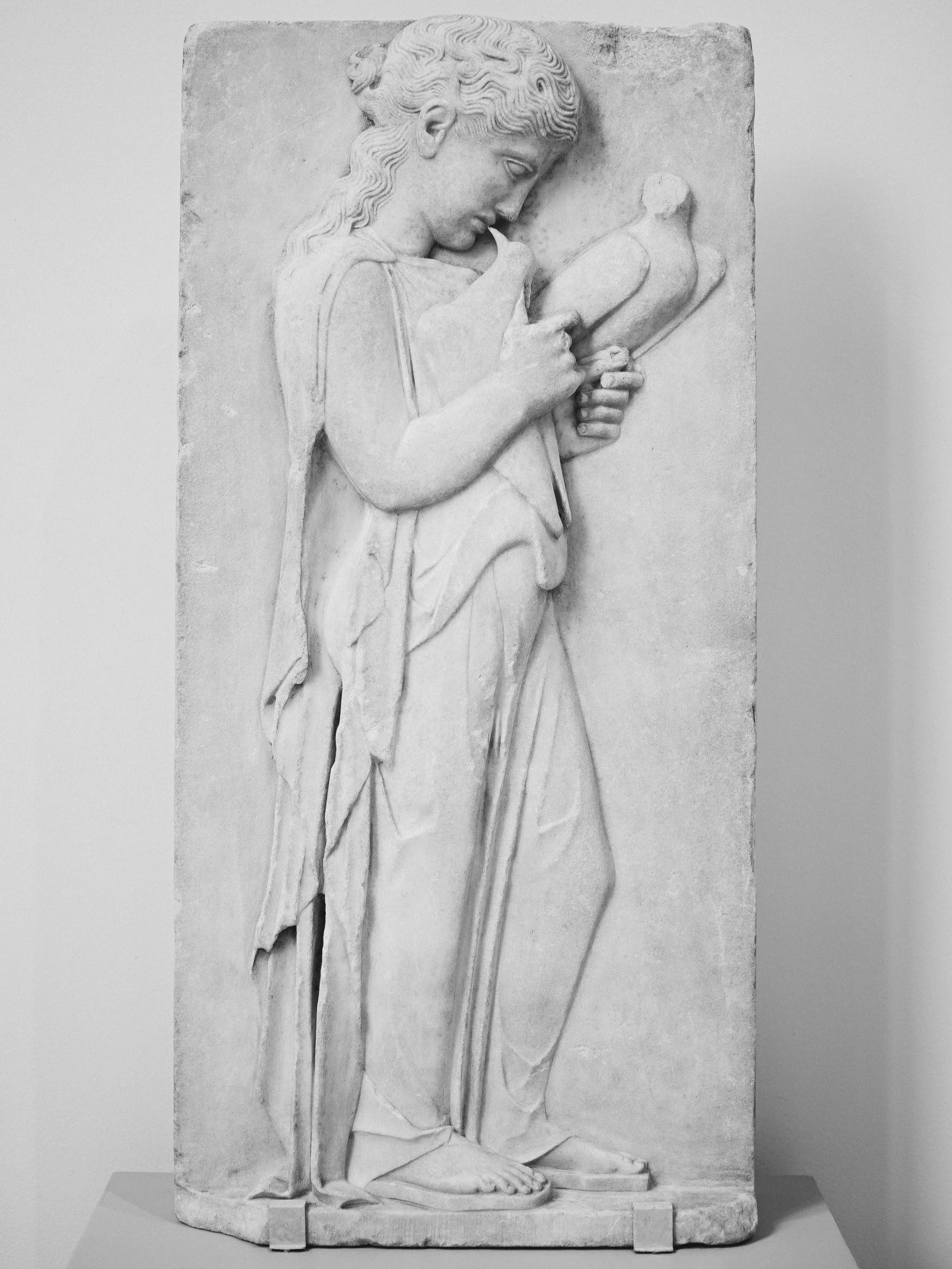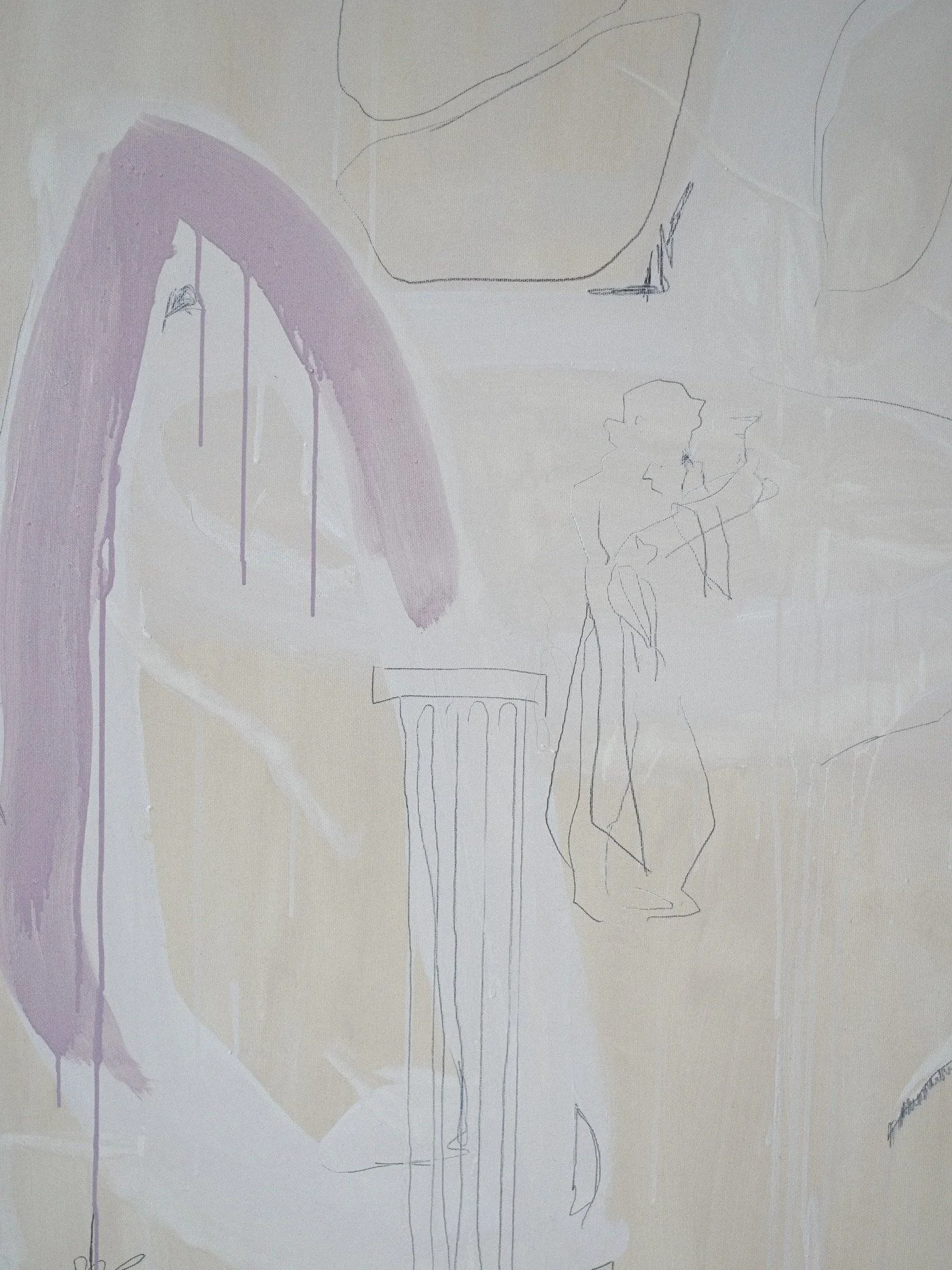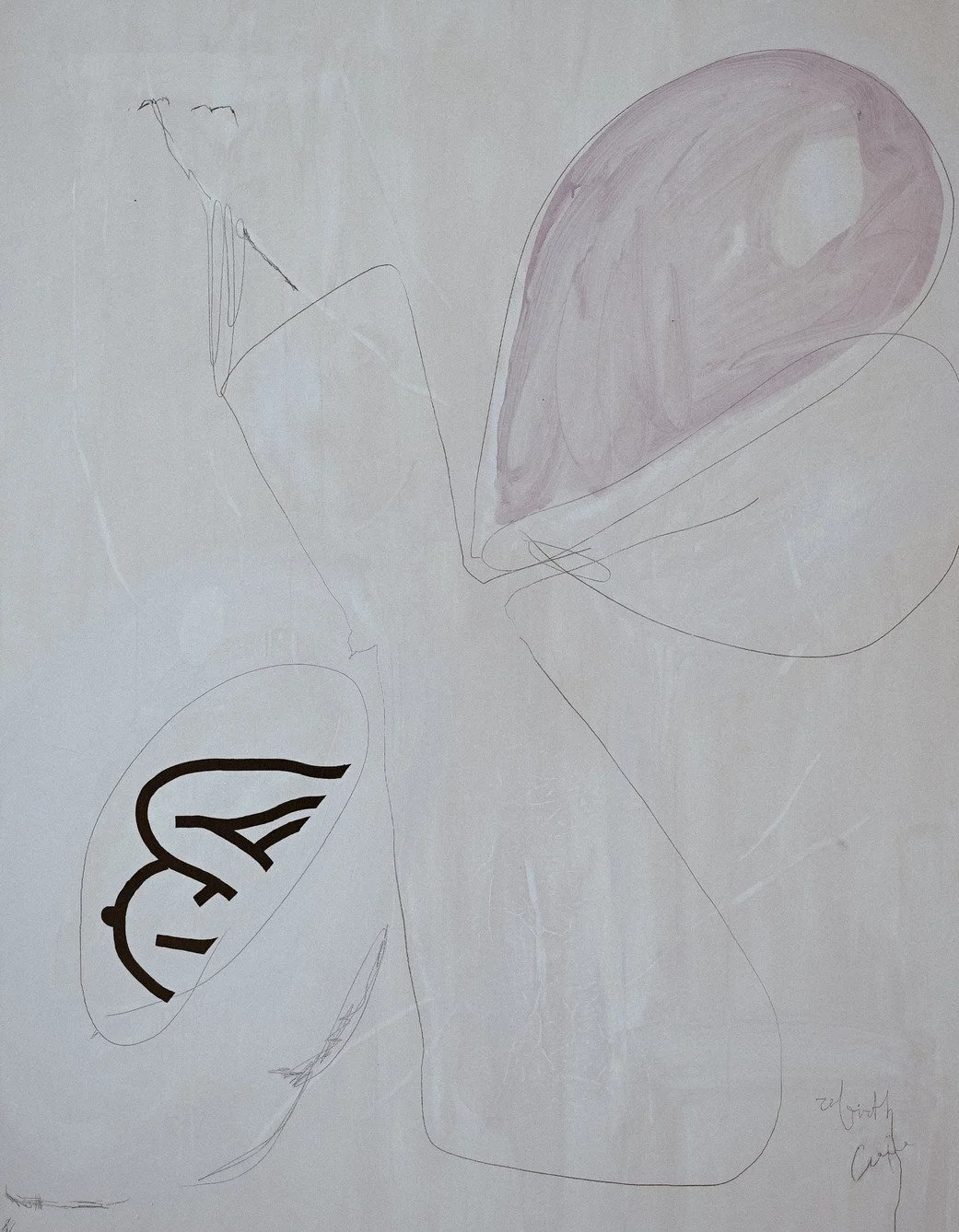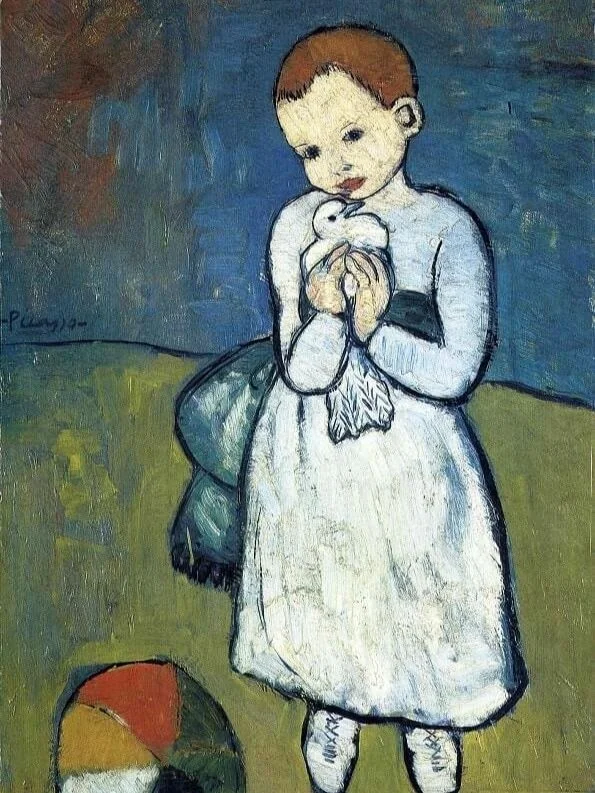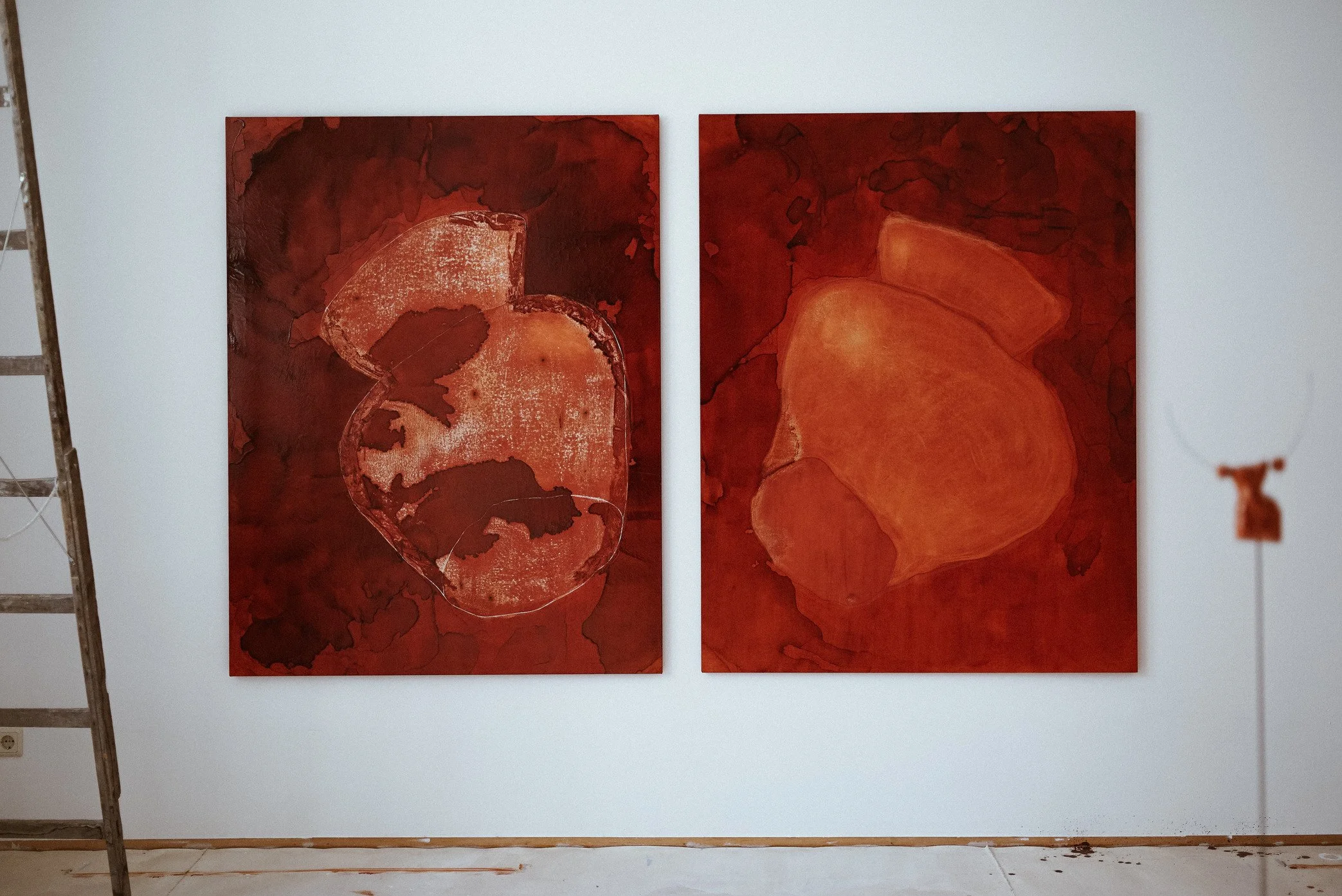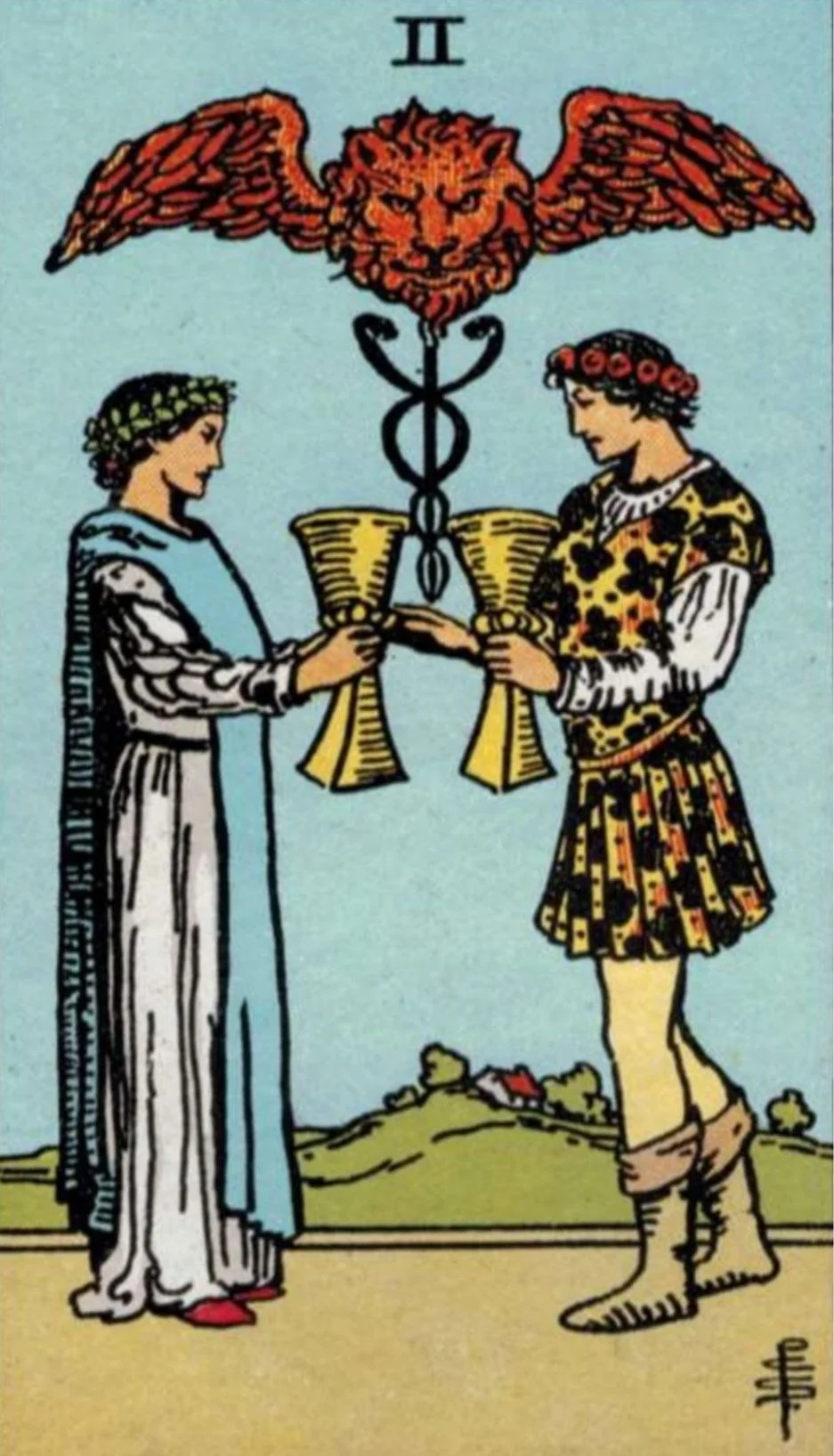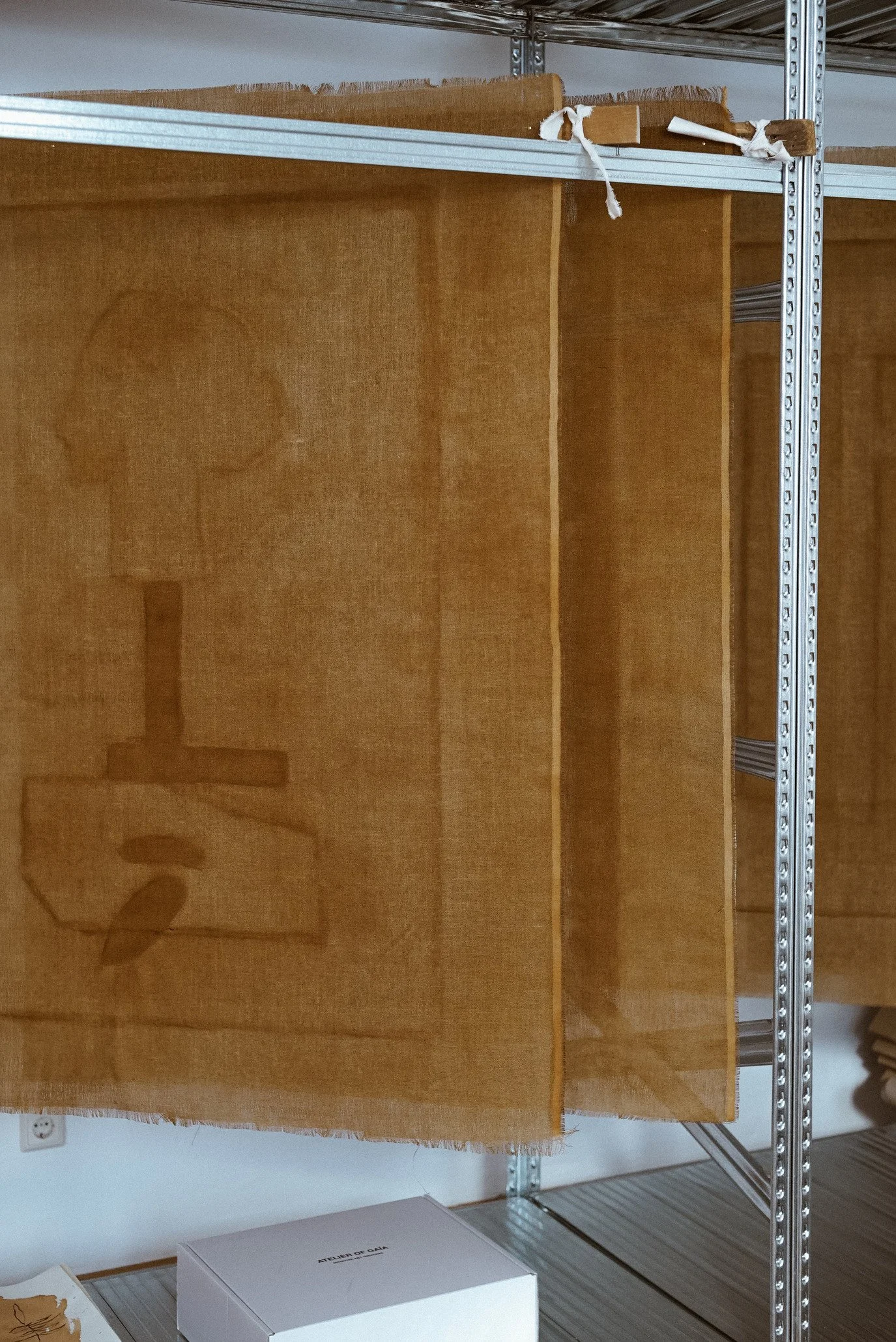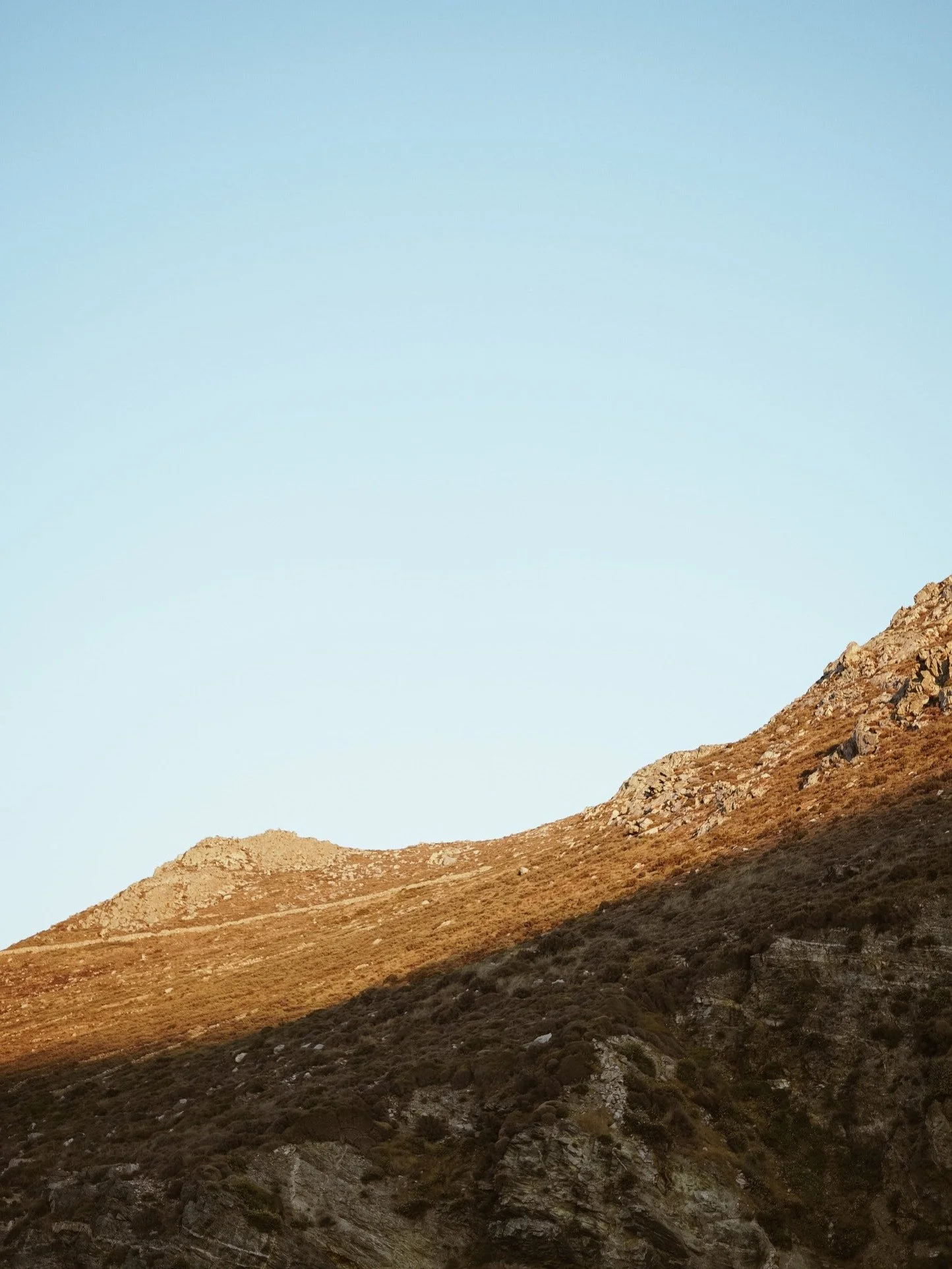AC1
ONE CURTAIN FALLING, ANOTHER OPENING
CATALOGUEIn "One curtain falling, Another opening," GAÏA's exploration of duality takes centre stage, weaving intricate narratives around life, death, creation, destruction, and transformation. The collection transcends conventional aesthetics, carrying profound symbolic weight as GAÏA invites viewers on a meditative journey through her hybrid artworks. Her intentional creative approach connects elements from past and present, fostering a nuanced dialogue between tradition and innovation. AC1 emerges as a testament to timeless themes embedded in the contemporary context, shaped by GAÏA's travels to the Cycladic Islands, cultural revelations, readings of Cavafy's poetry, and local life experiences. Returning to her Vienna atelier, GAÏA refines AC1 with meticulous attention, creating a diverse art collection encompassing oil paintings, textiles, mixed media works, sculptures, ready-mades, photography, and wearable art pieces. This artistic tapestry reflects GAÏA's divine connection to nature and her profound exploration of universal themes in the ever-evolving world.
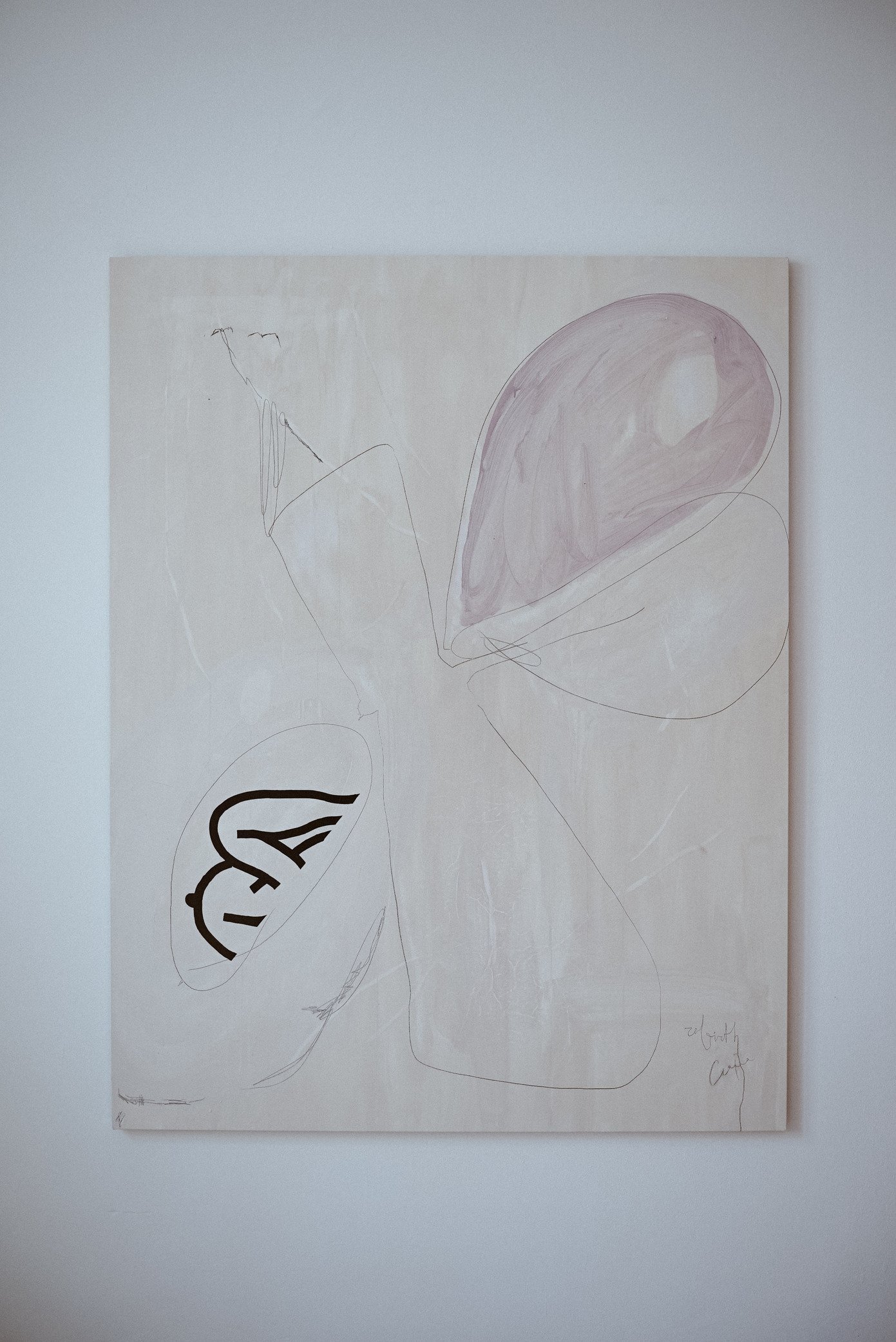
REBIRTH, 2022, OIL, PENCIL AND INK ON CANVAS, 120X155 CM

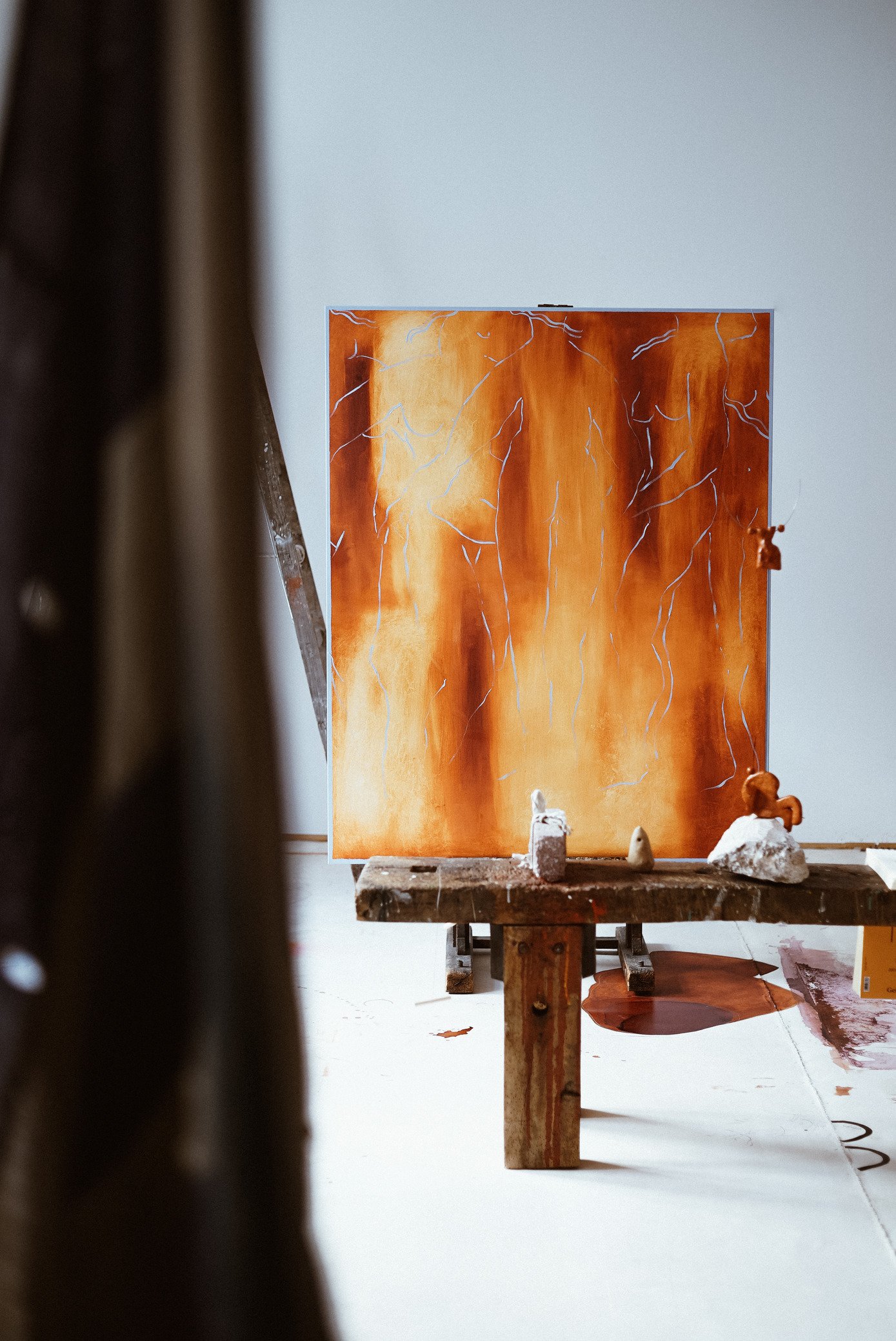

STILL LIFE, 2023, LINEN, SHELLAC, 132X144 CM
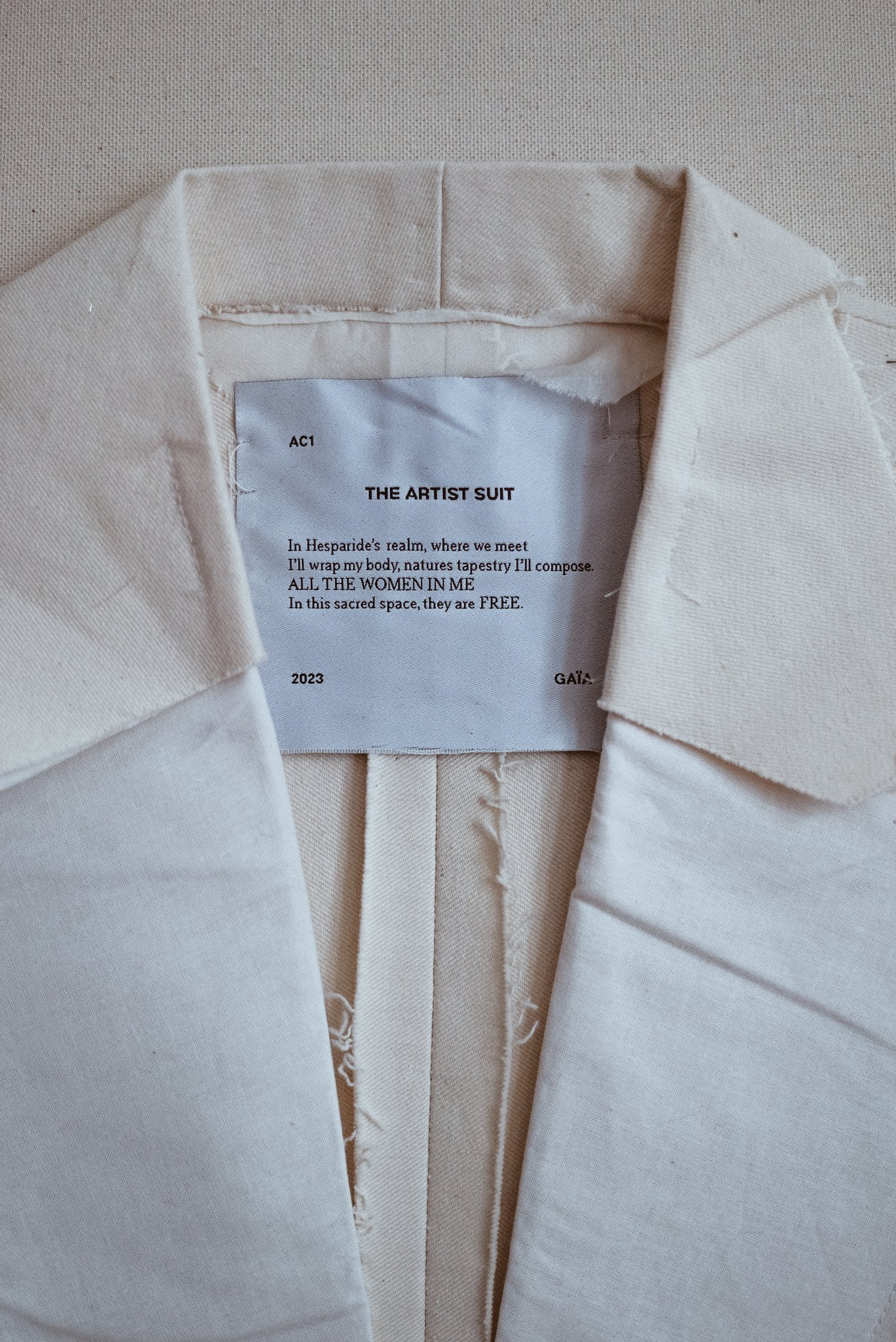
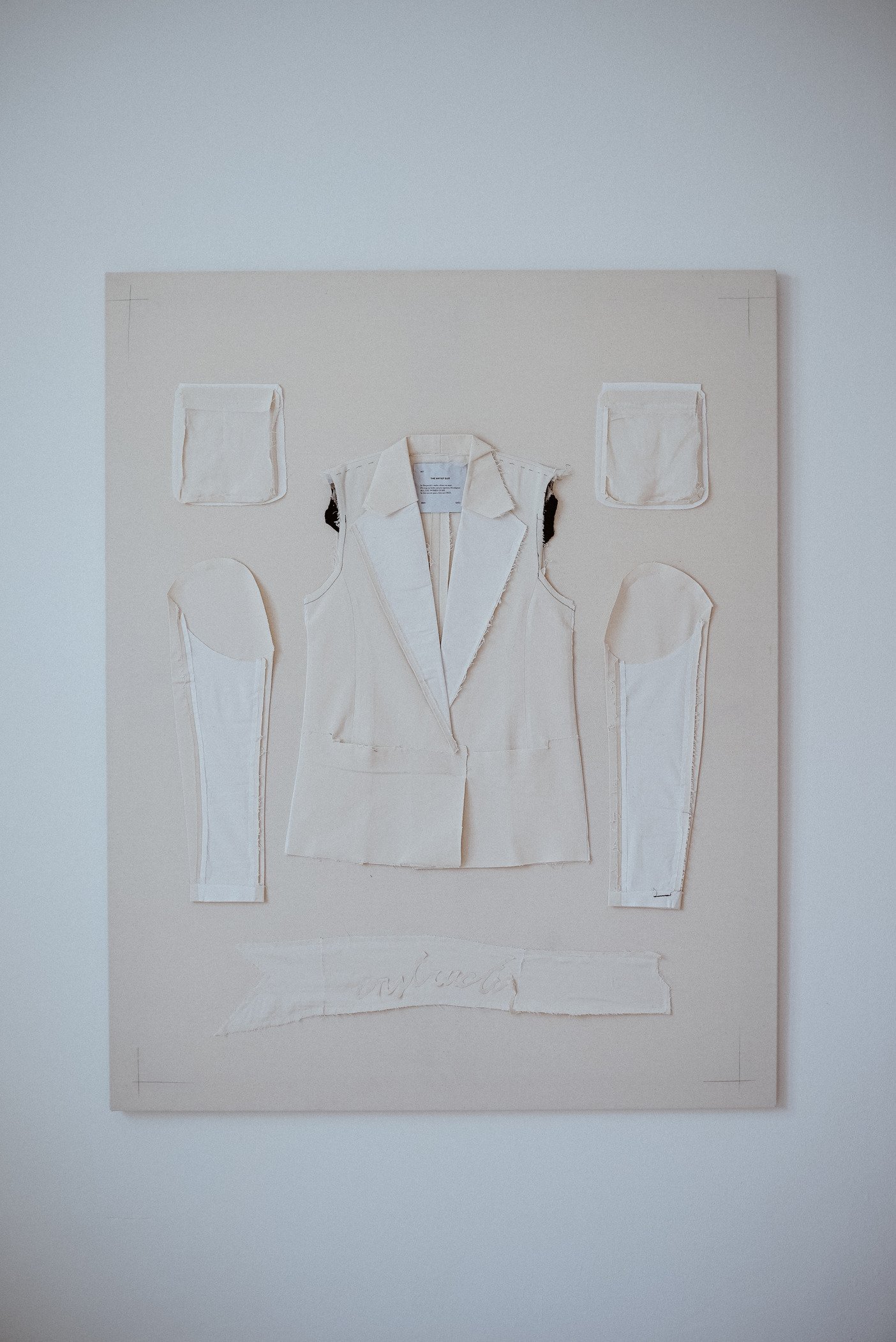
THE ARTIST SUIT / RECONSTRUCTION, 2023, TEXTILE, 120X150 CM
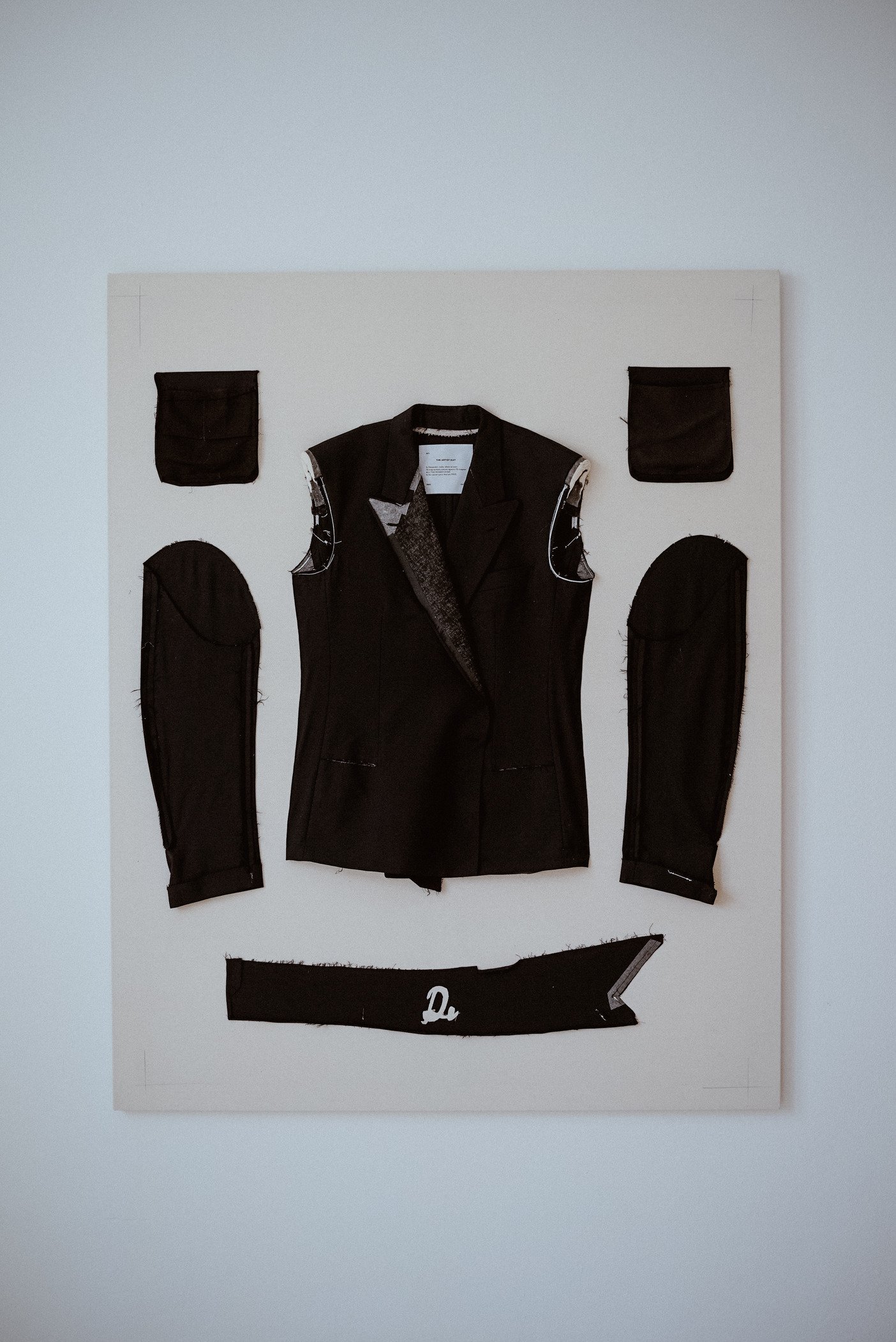
THE ARTIST SUIT / DECONSTRUCTION, 2023, TEXTILE, 120X150 CM

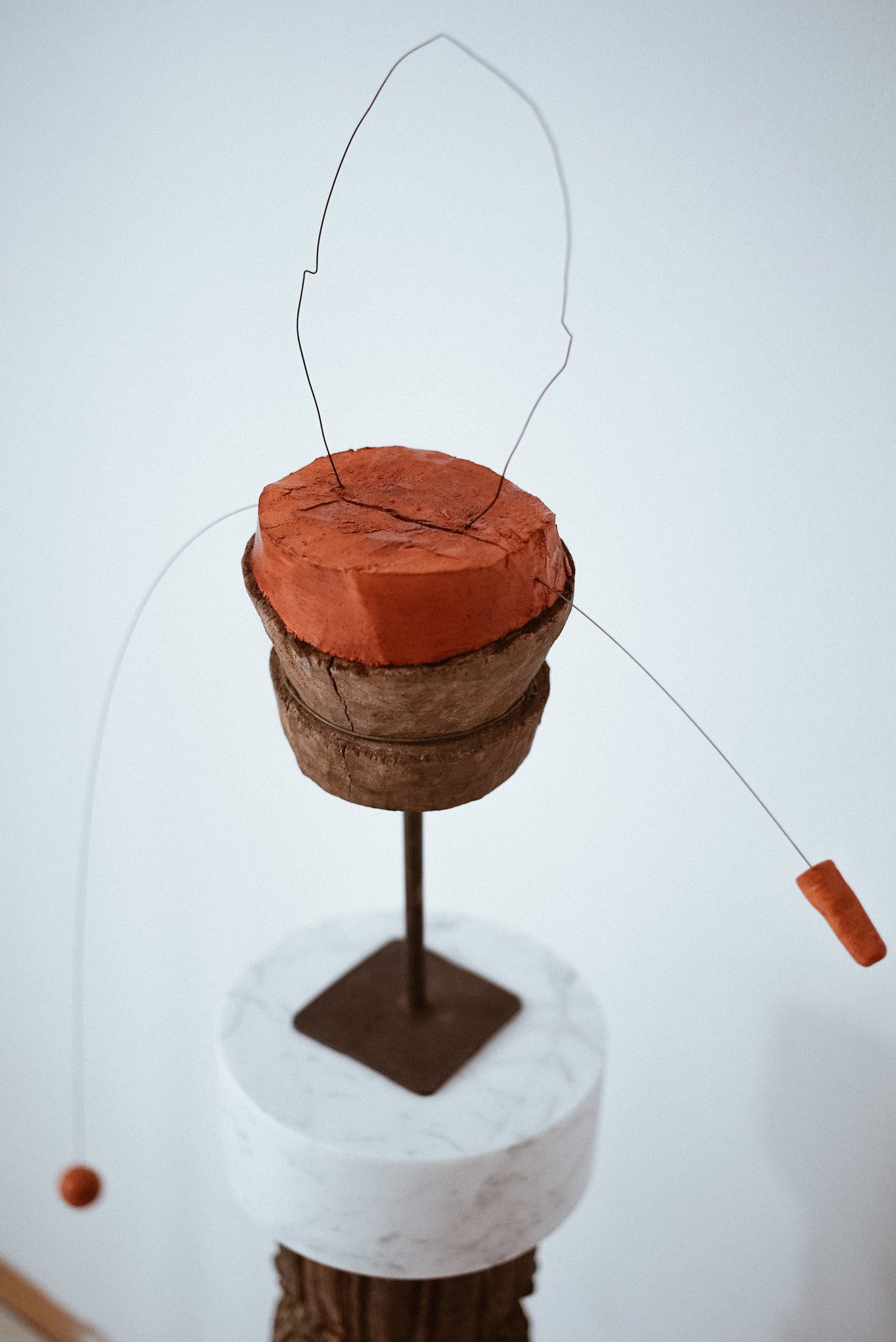
PORTRAIT OF A BOY, 2023, KERAMIPLAST, WIRE, WOOD, 86X58 CM
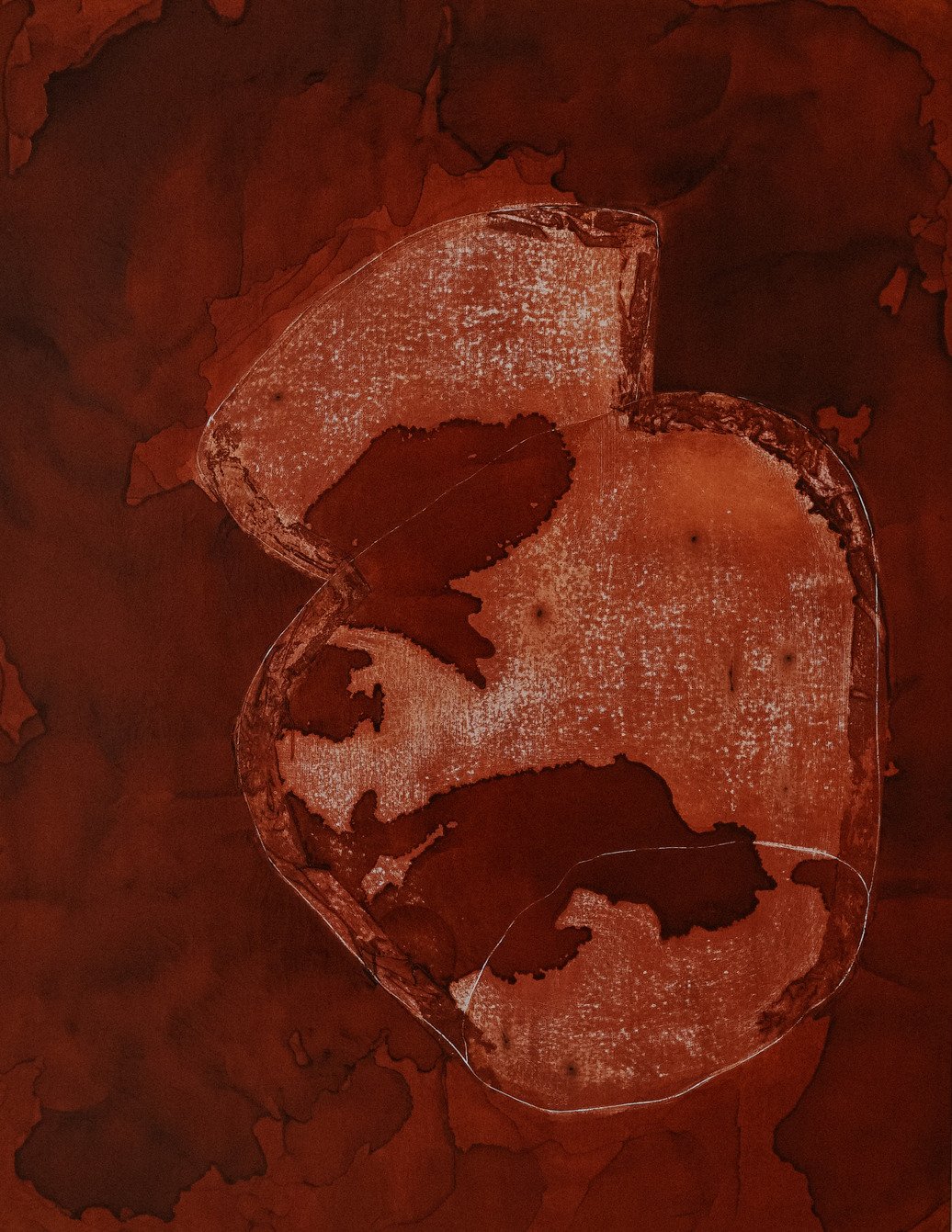
TWO OF CUPS 2085, 2023, OIL, SHELLAC ON CANVAS, 120X155 CM
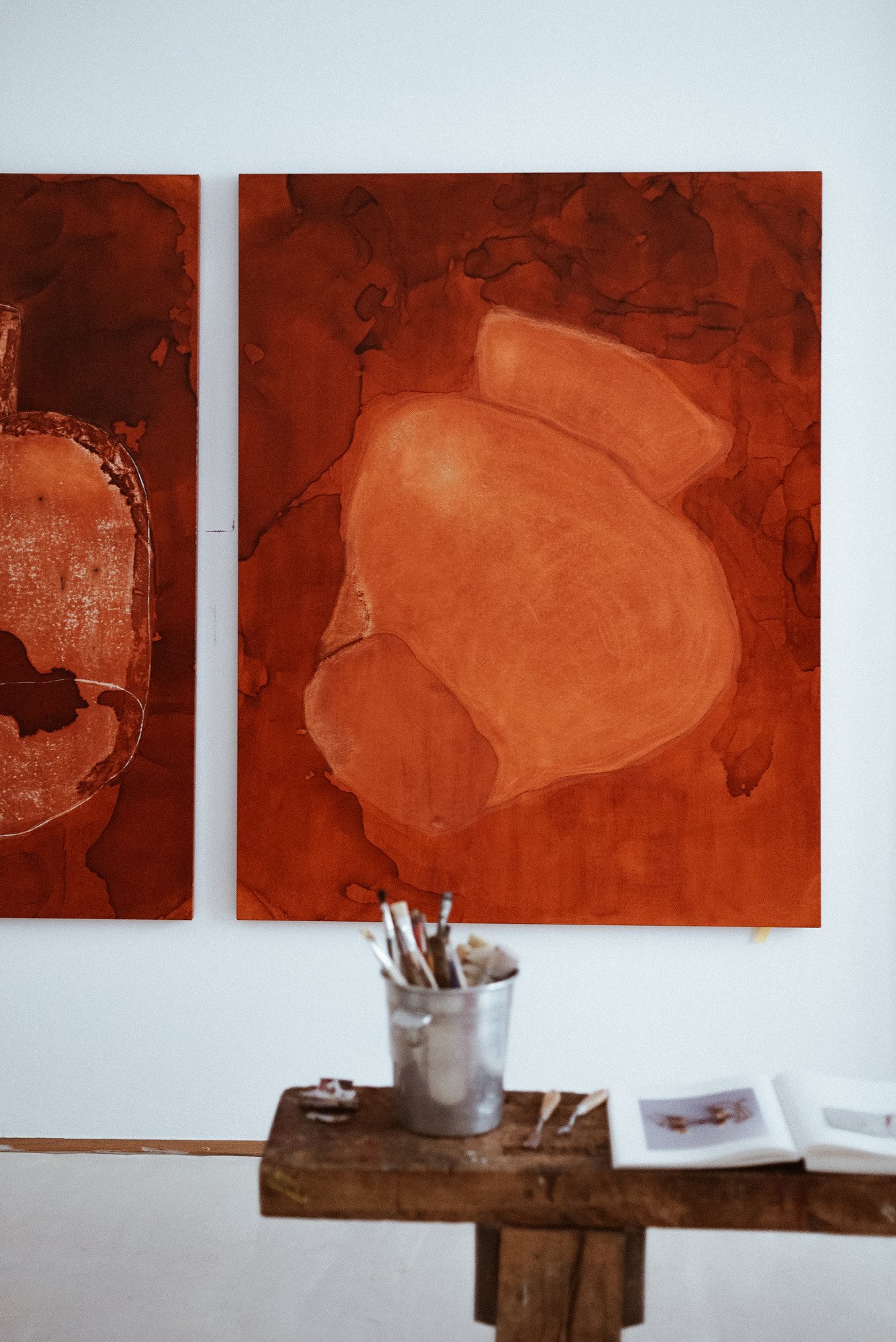
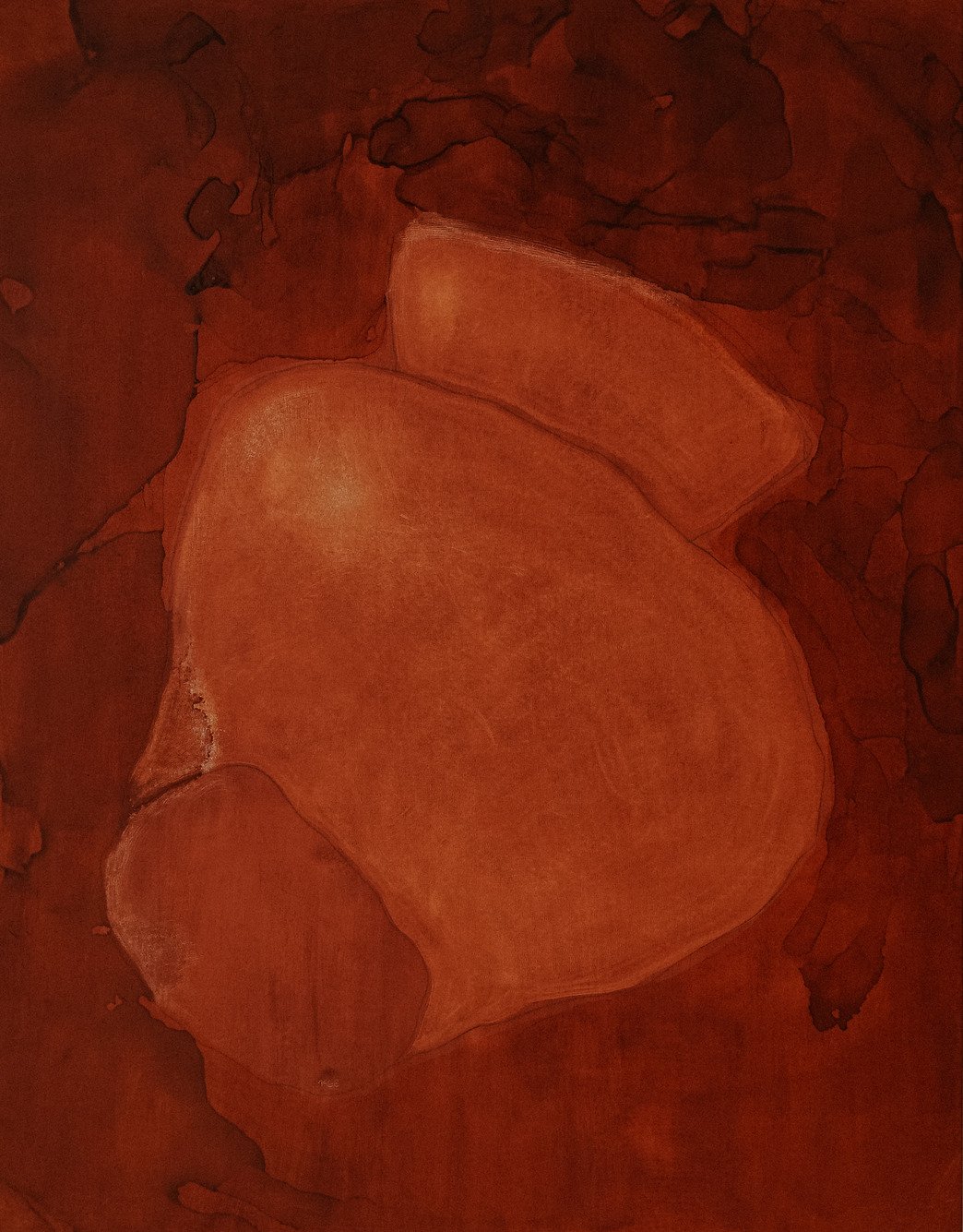
TWO OF CUPS 1466, 2023, OIL, SHELLAC ON CANVAS, 120X155 CM

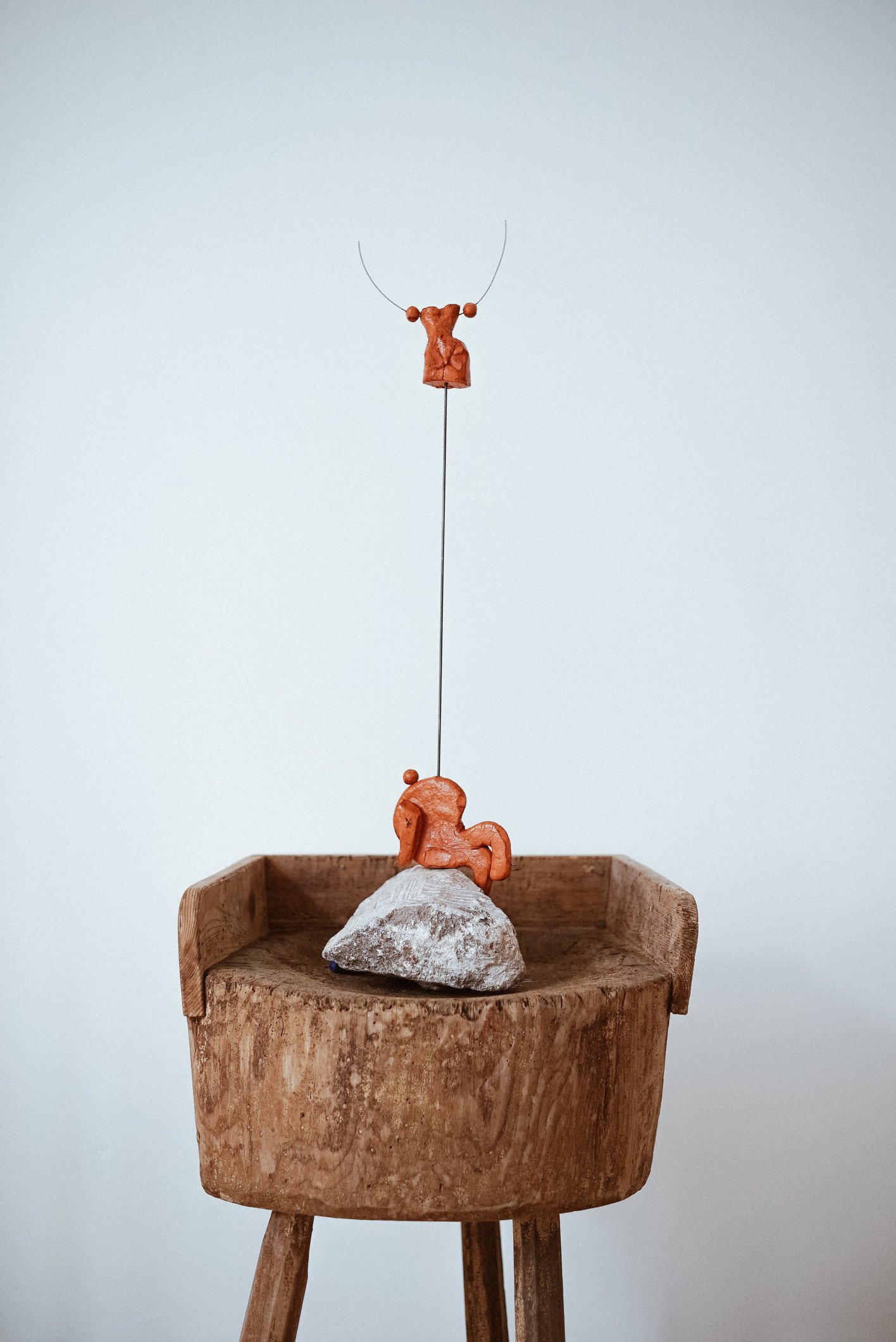
MOON WOMAN, 2023, KERAMIPLAST, METAL WIRE, STONE, 84X22X30 CM
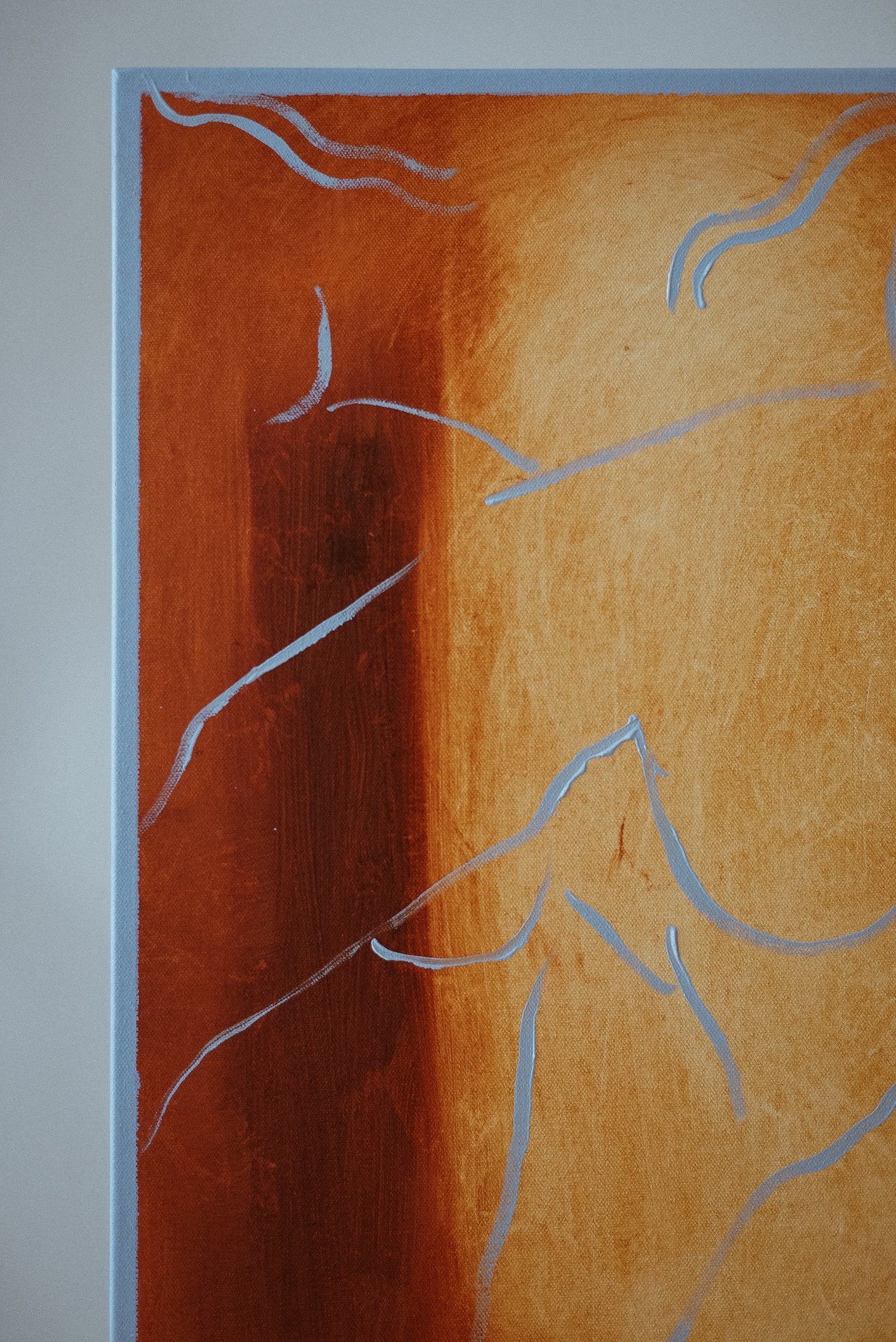

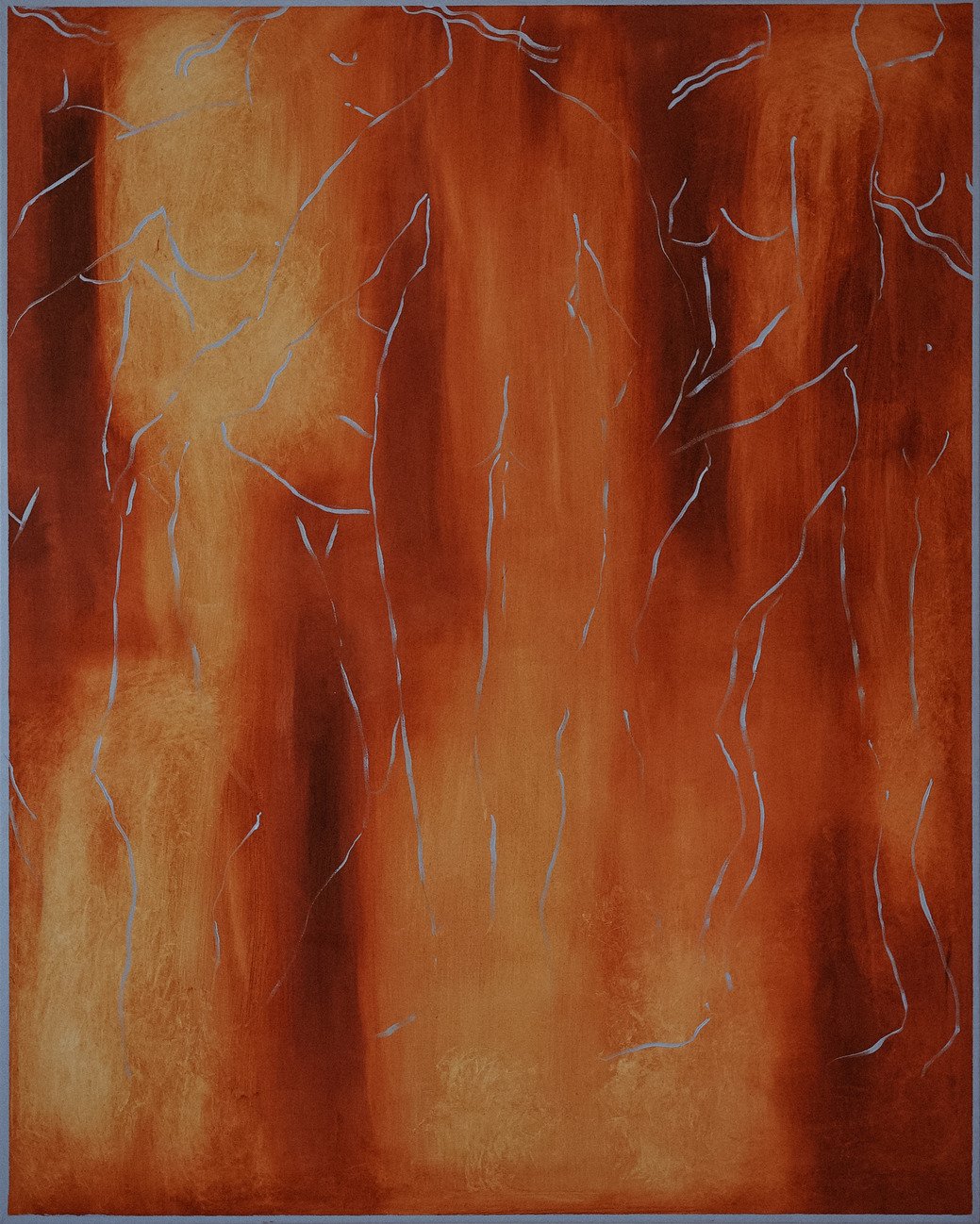
GARDEN OF HESPERIDES / CENTRAL NUDES, 2023, OIL ON CANVAS, 120X150 CM
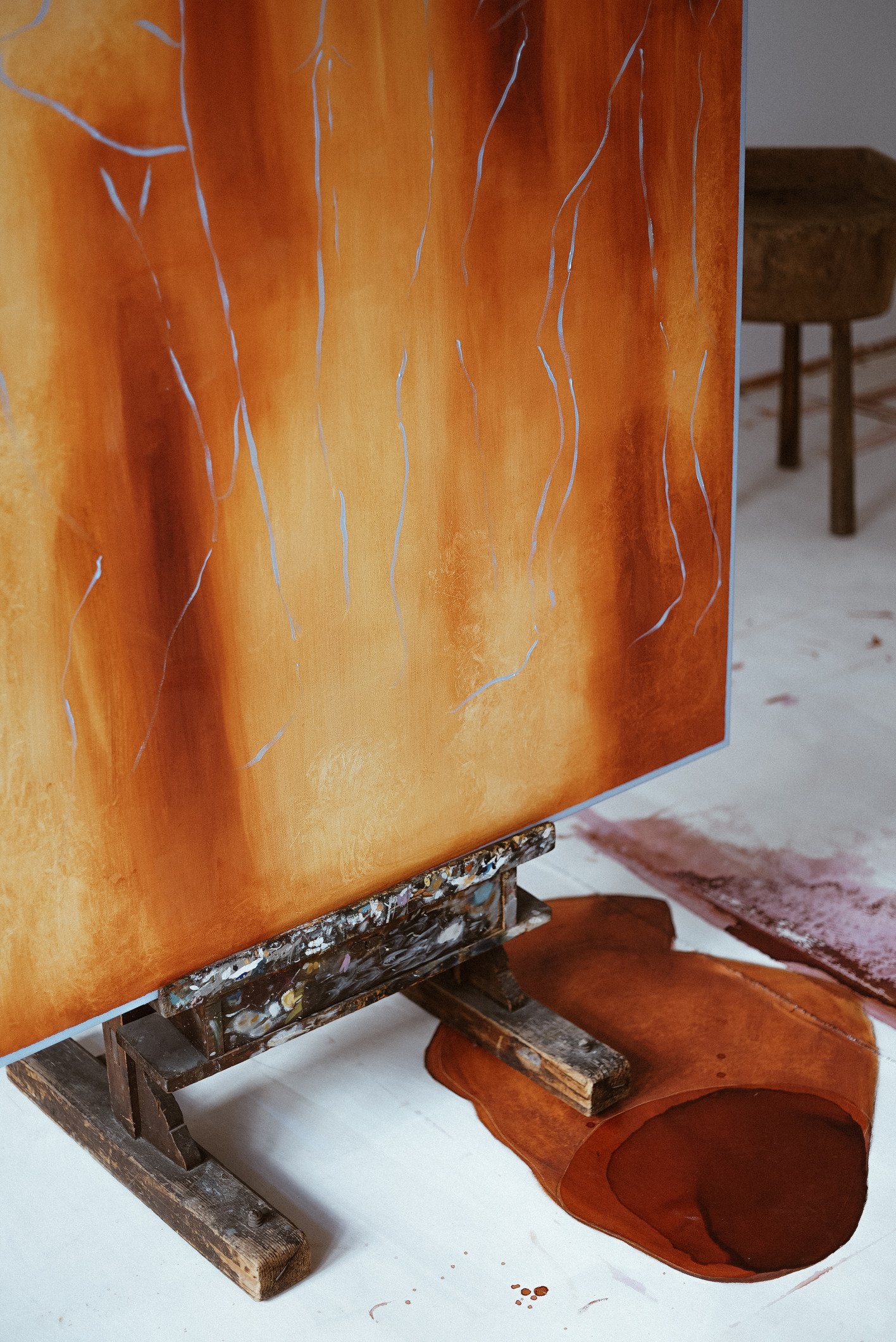
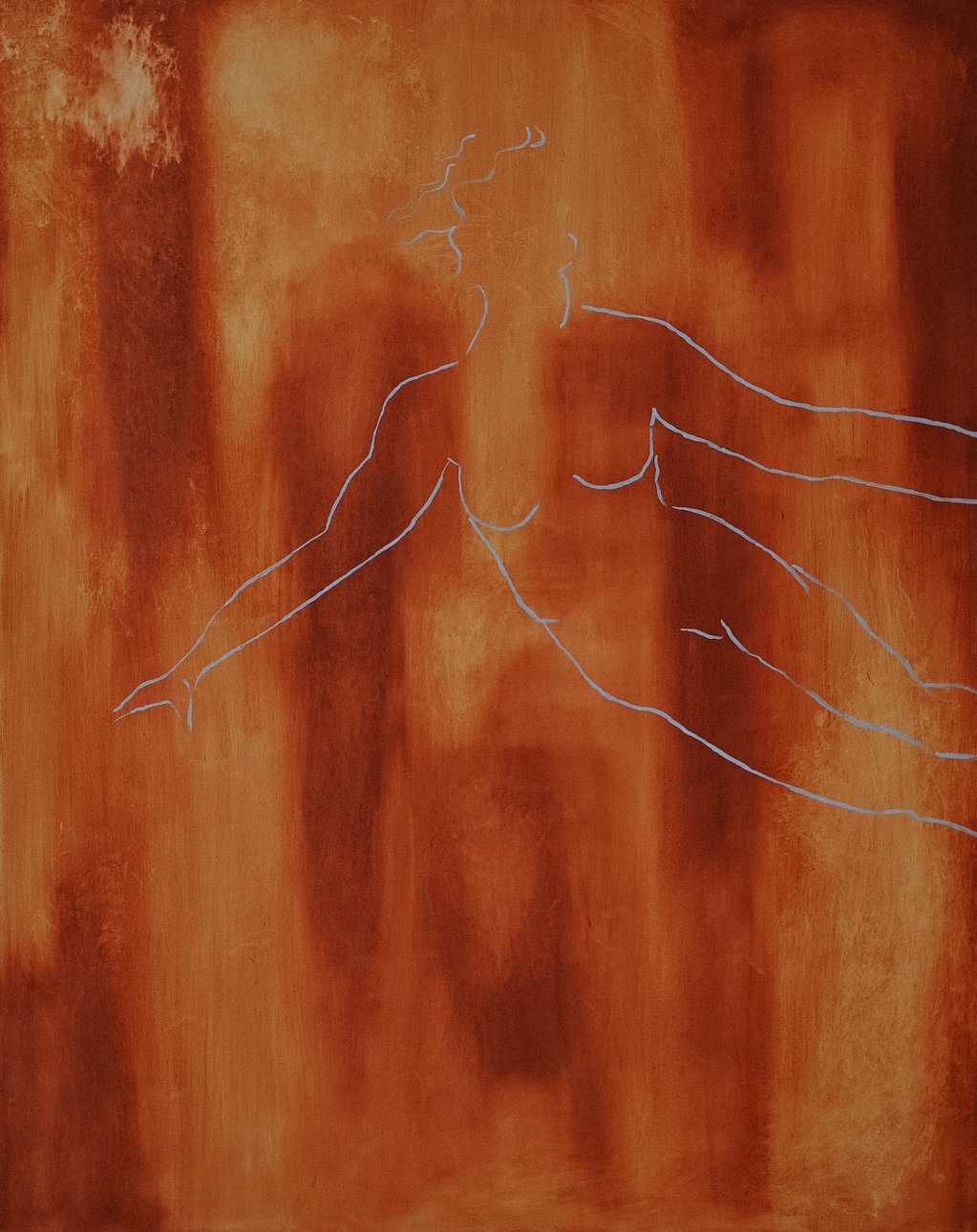
GARDEN OF HESPERIDES / FLOATING NUDE I, 2023, OIL ON CANVAS, 120X150 CM

GARDEN OF HESPERIDES / FLOATING NUDE II, 2023, OIL ON CANVAS, 120X150 CM
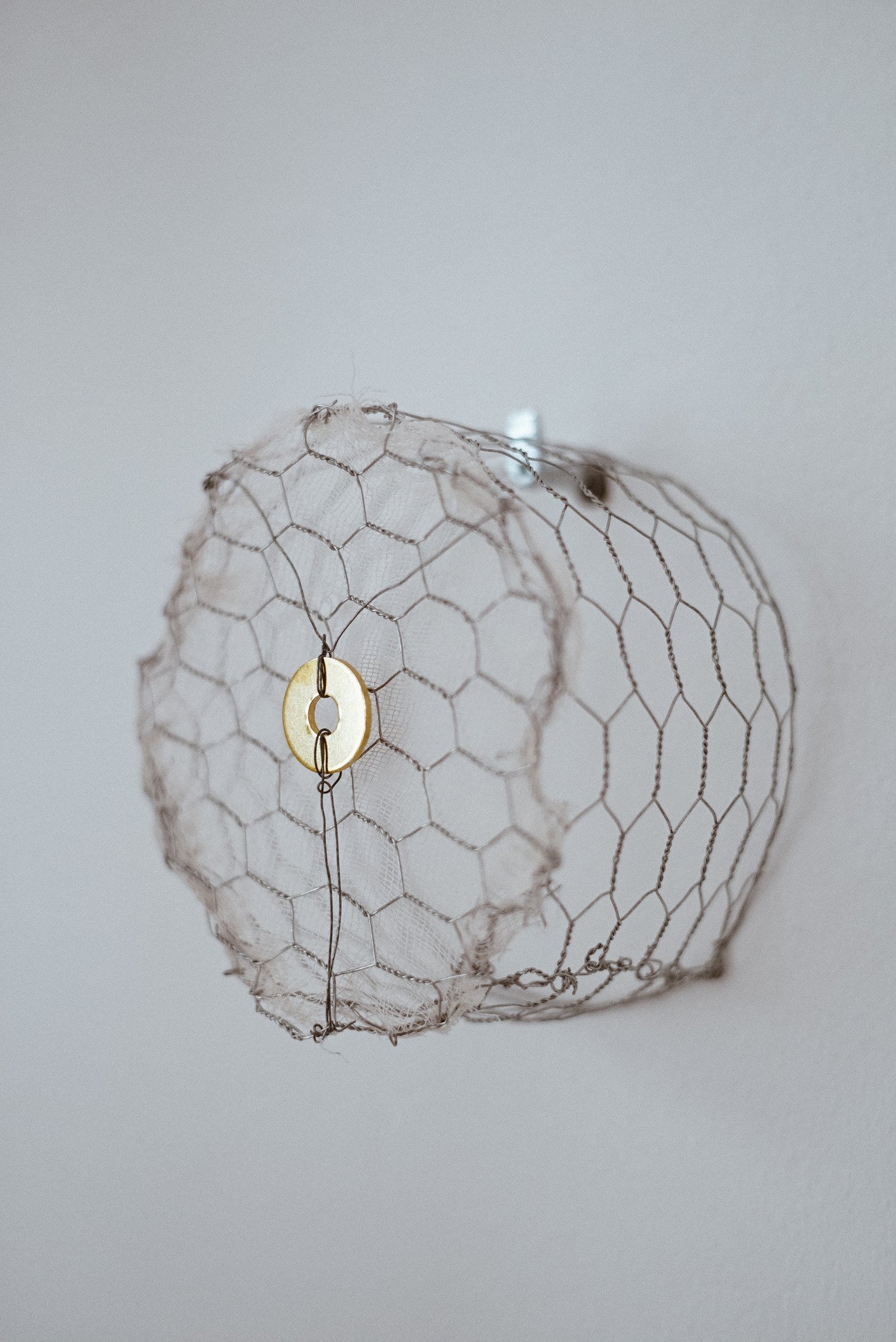
THE NET, 2023, WIRE MESH, TEXTILE, PLATED RING, 14X14X9 CM
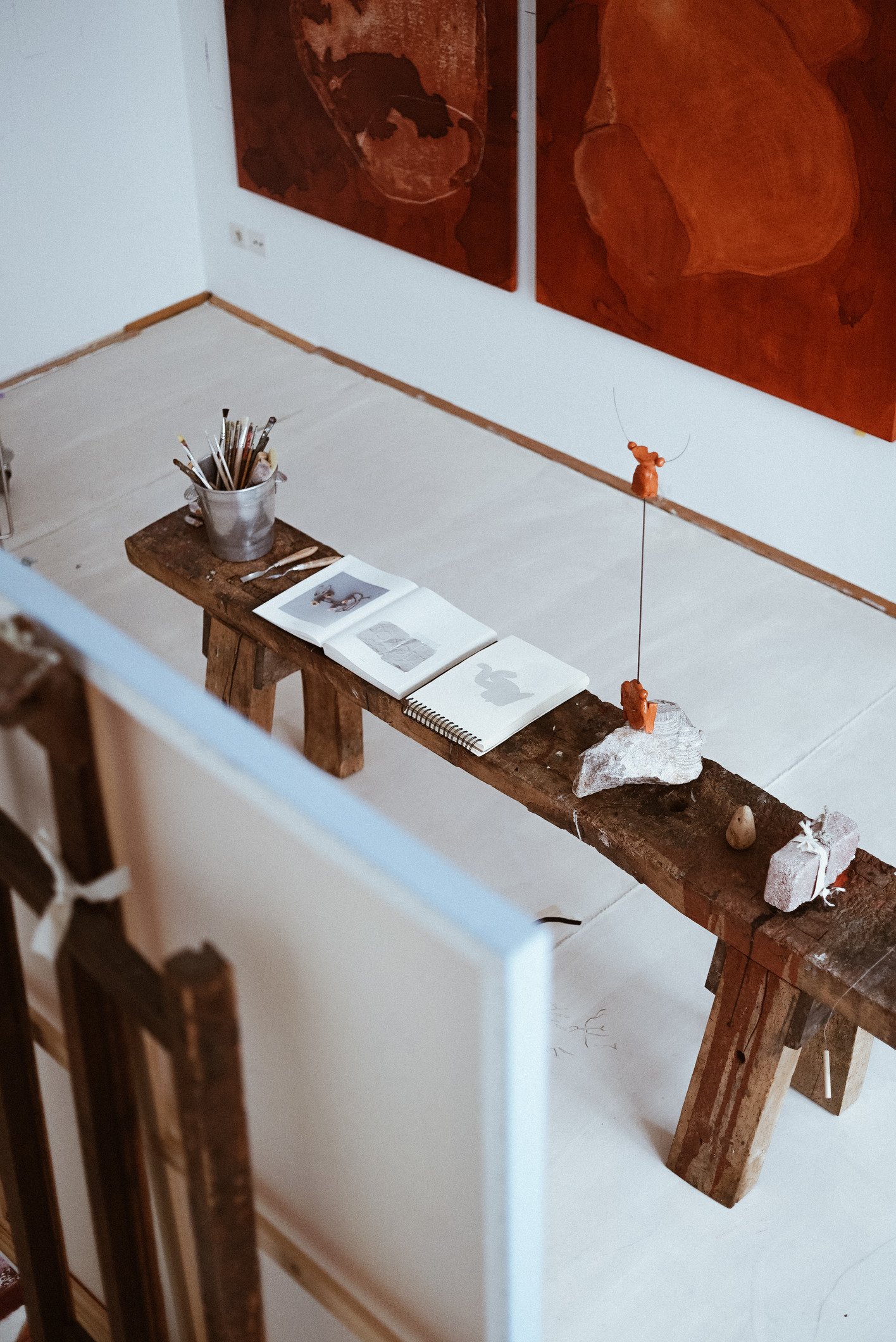
READYMADE ATELIER CONSOLE, 1900, OAK, 221X58X39 CM
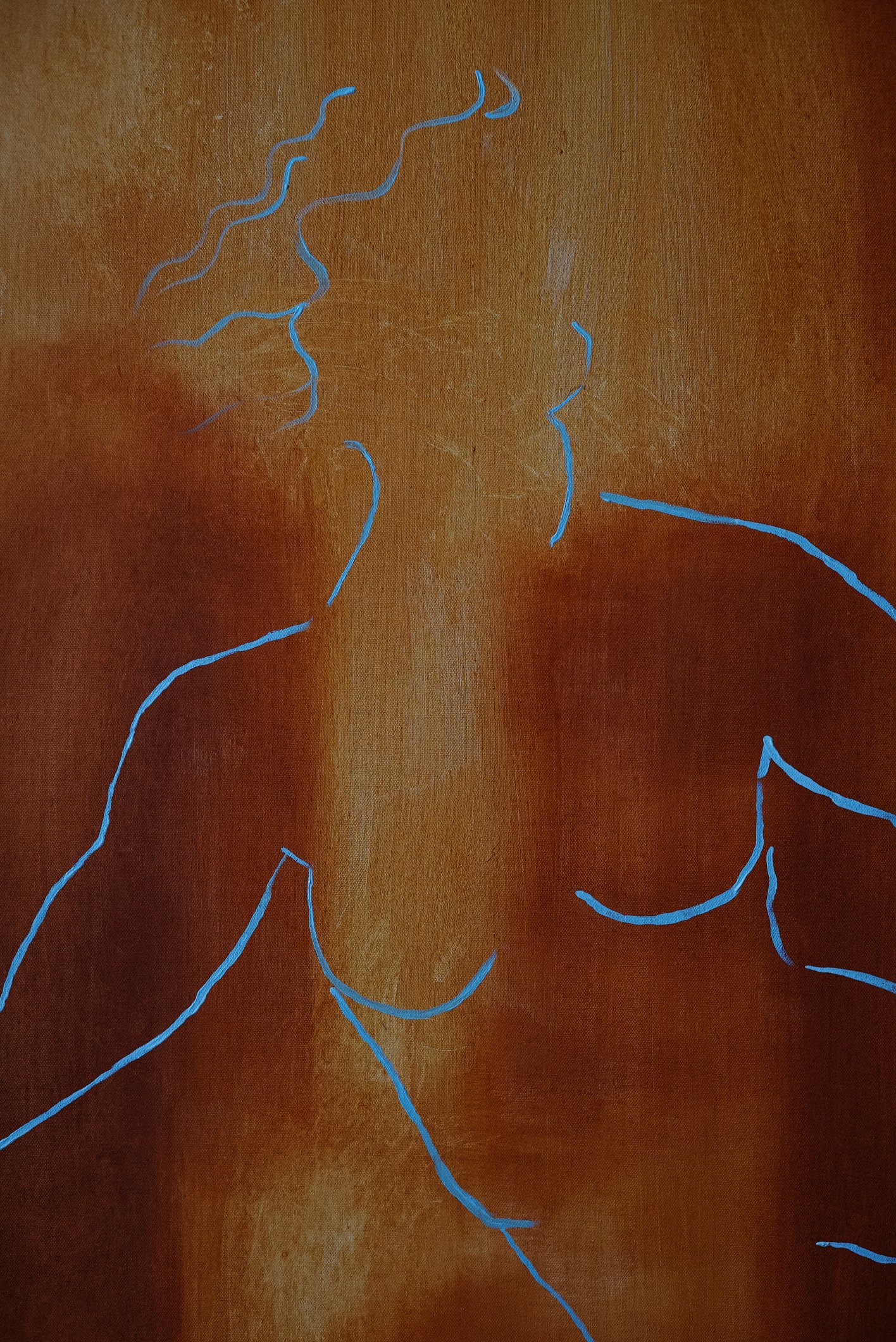
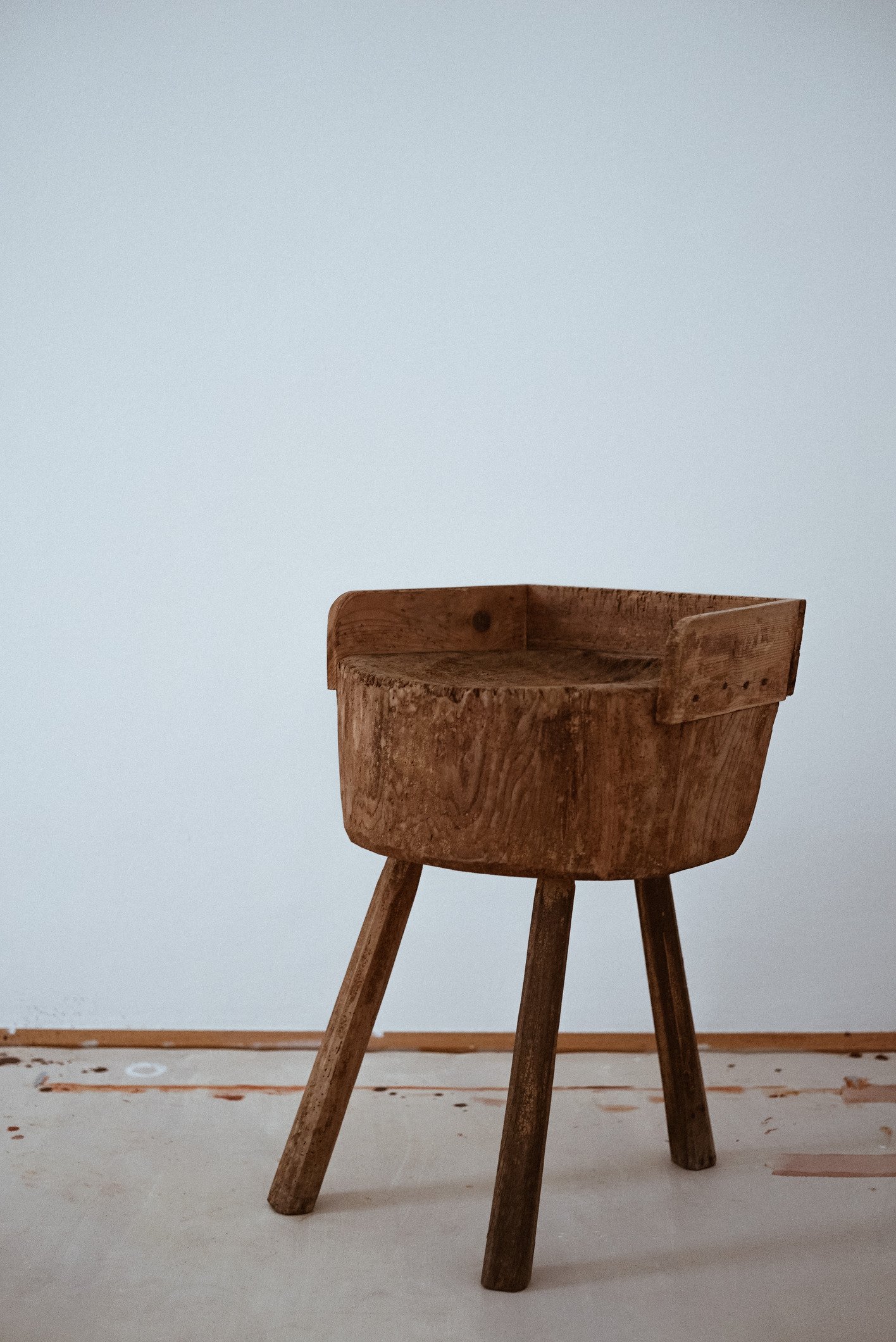
READYMADE ATELIER TRIPOD TABLE, 1890, BEECH, 48X76X51 CM
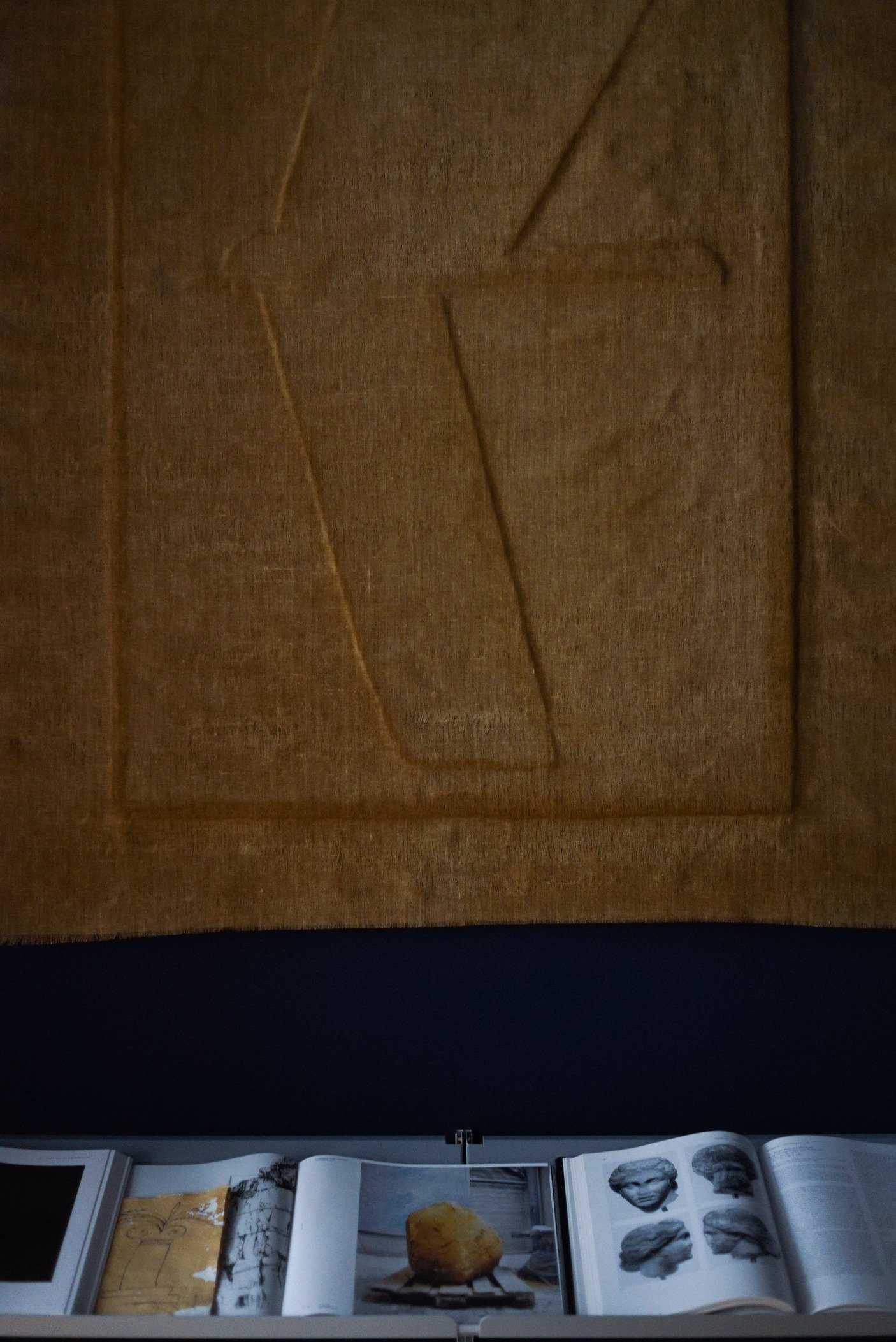


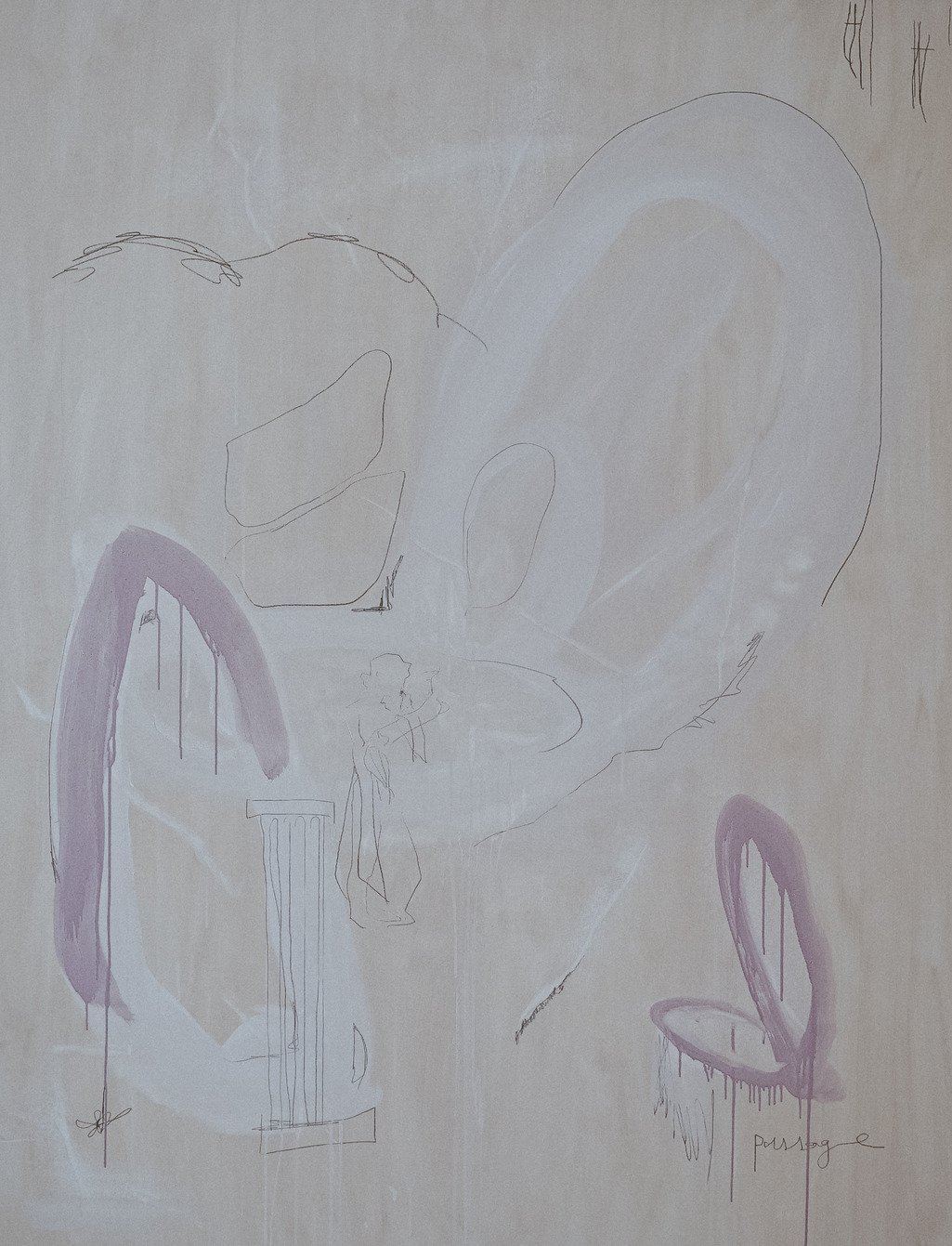
GIRL WITH A DOVE, 2022, OIL, PENCIL ON CANVAS, 130X168 CM

DOVE, 2023, LINEN, SHELLAC, 132X144 CM
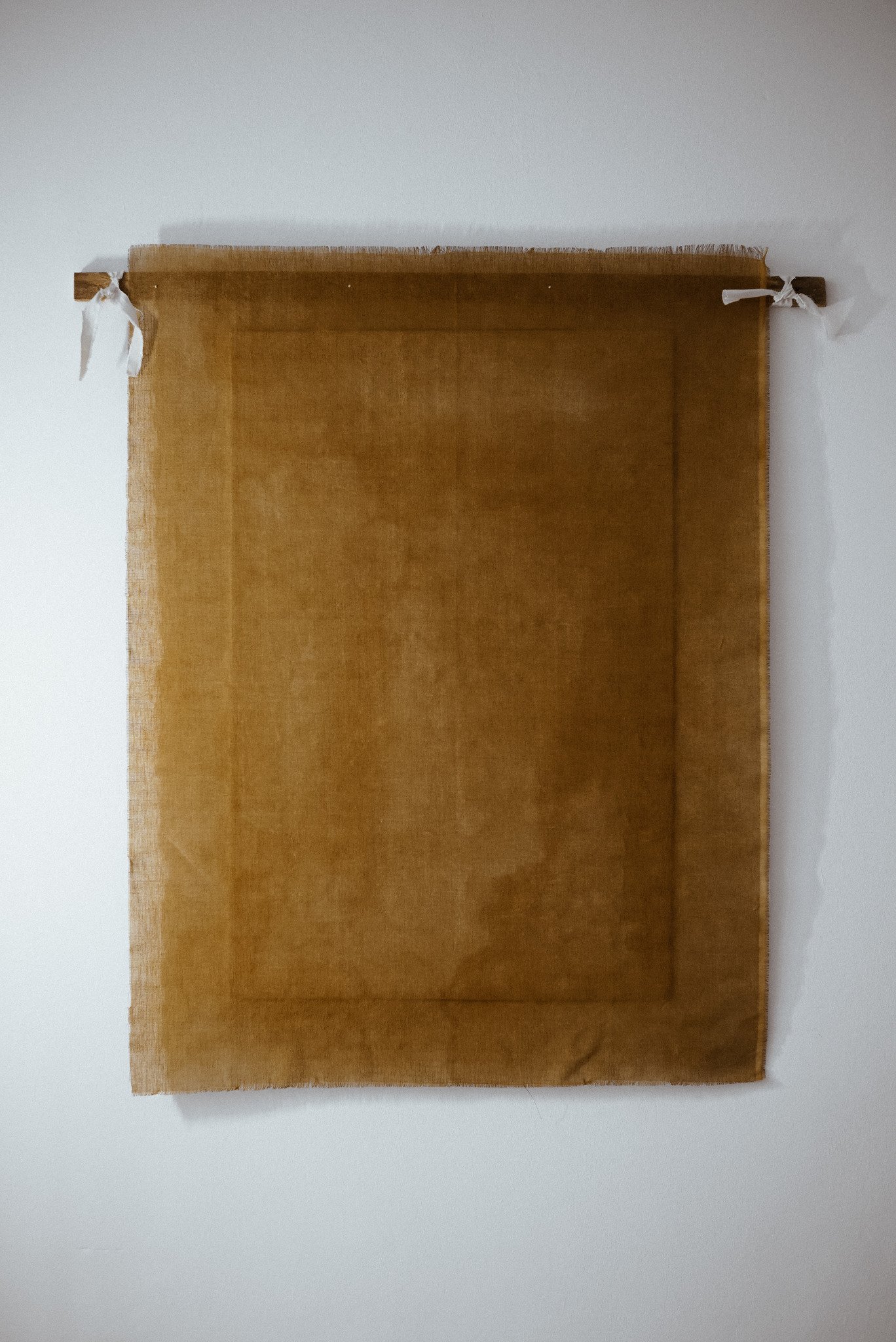
LANDSCAPE, 2023, LINEN, SHELLAC, 132X144 CM
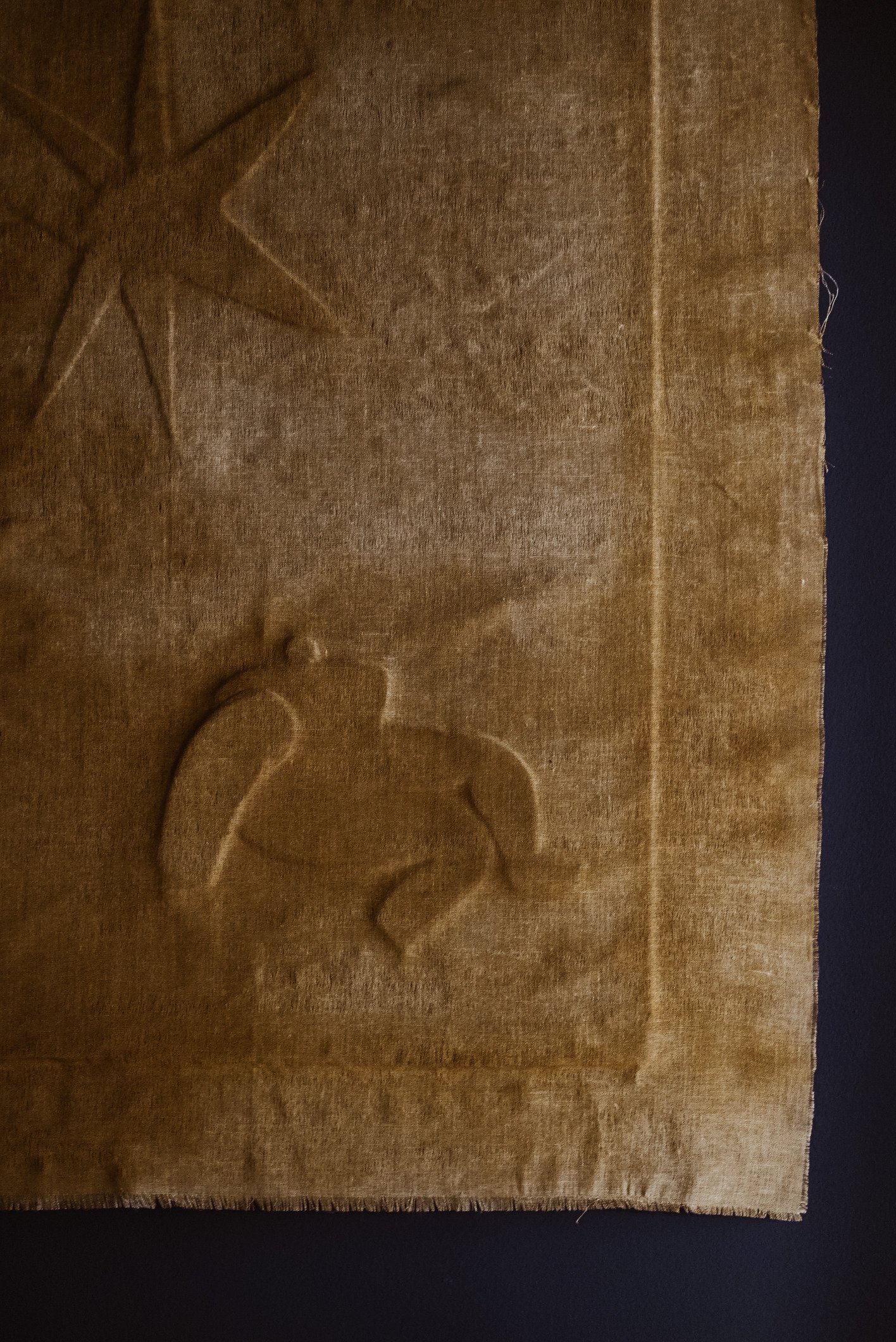
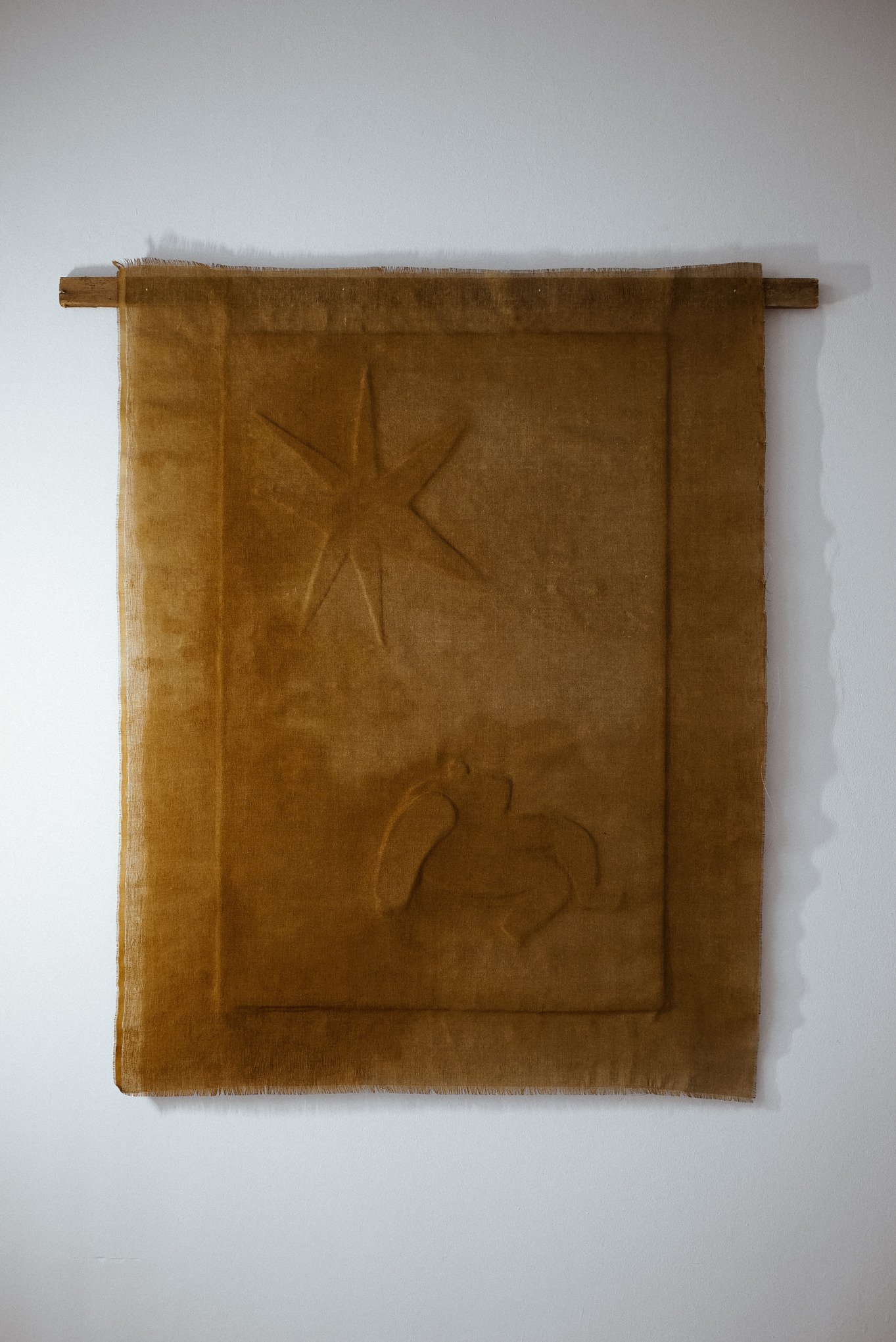
BATHER UNDER THE STARS, 2023, LINEN, SHELLAC, 132X144 CM
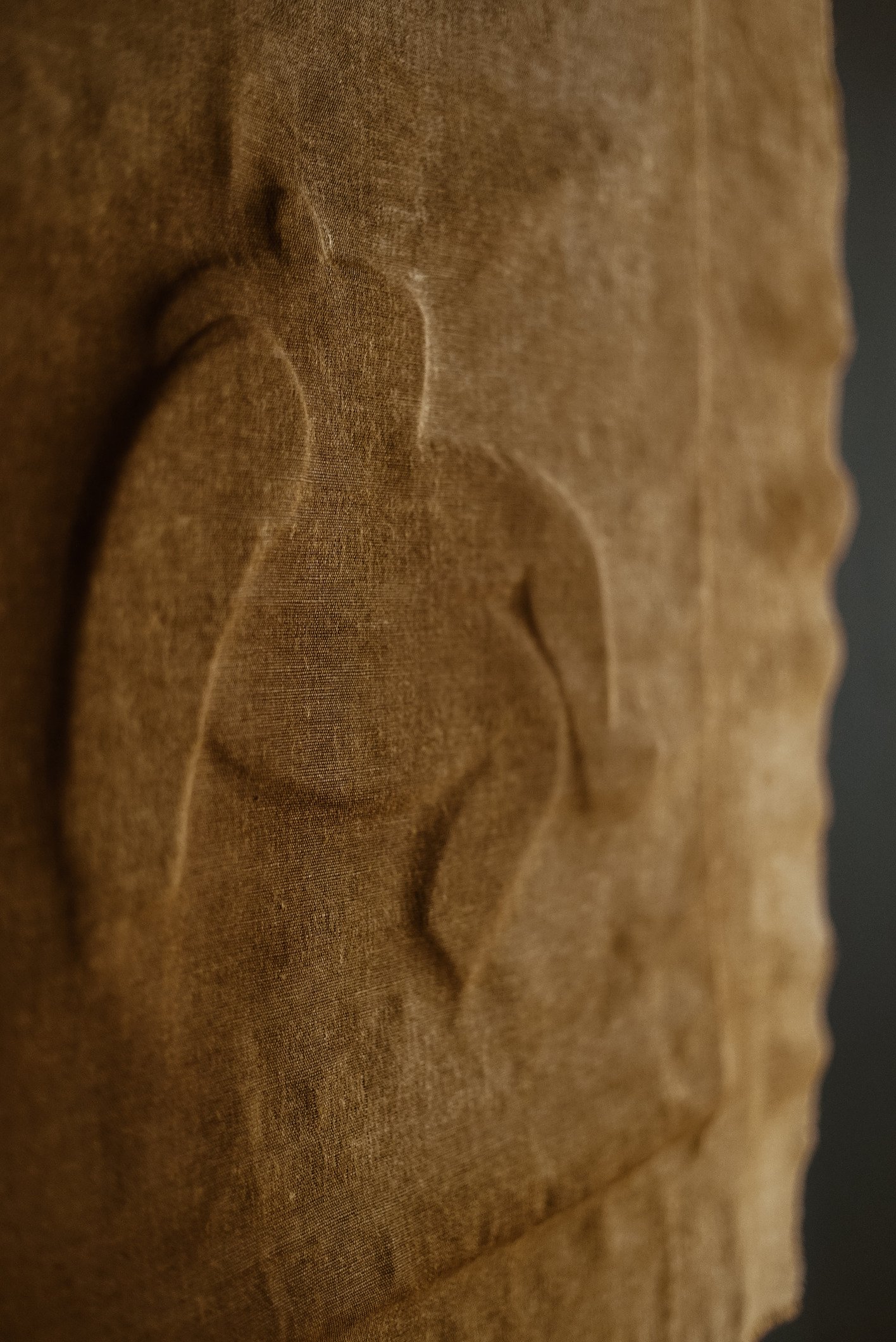
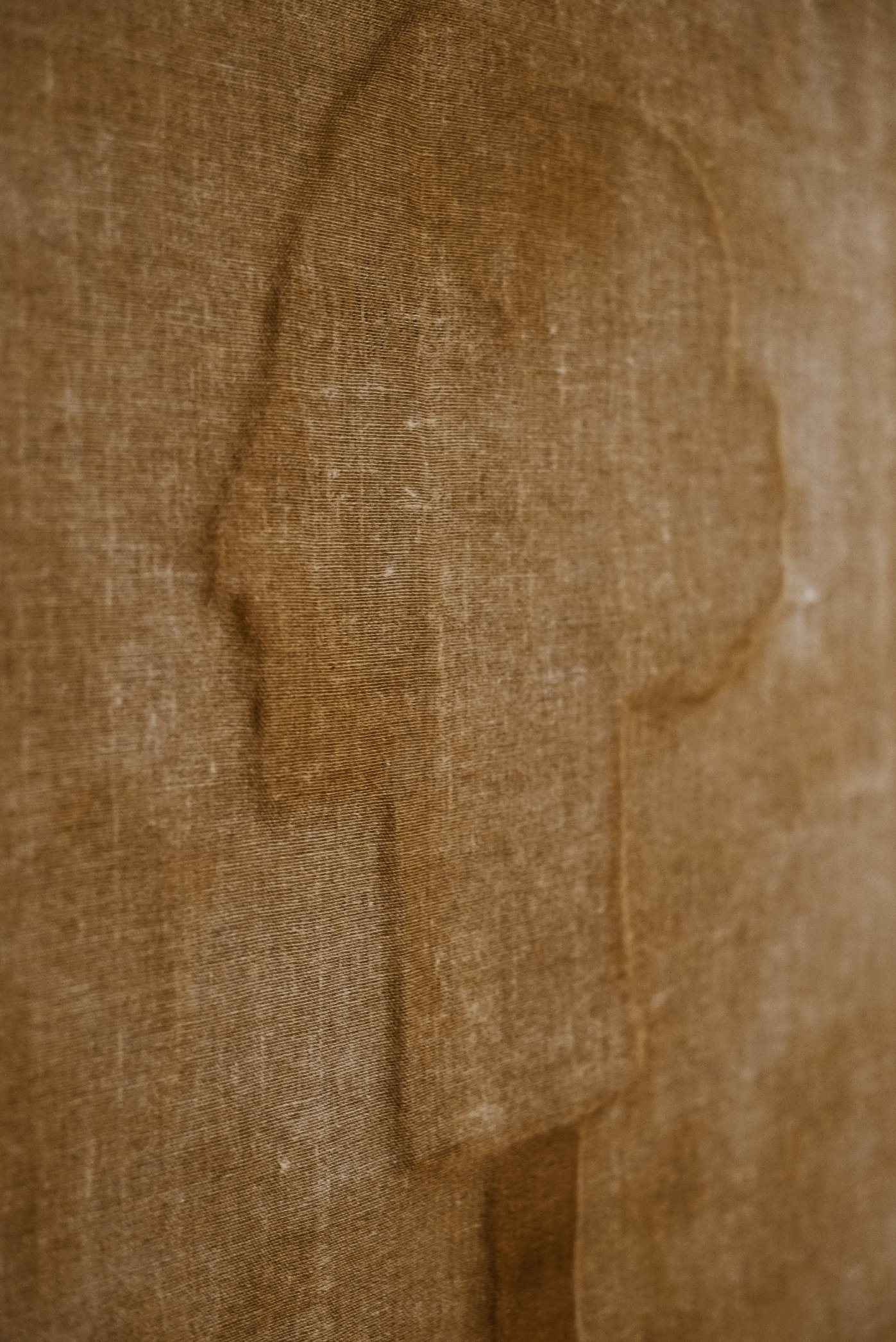

FISHERMAN'S NECKLACE, 2023, KERAMIPLAST, WIRE, CARDBOARD, STONE

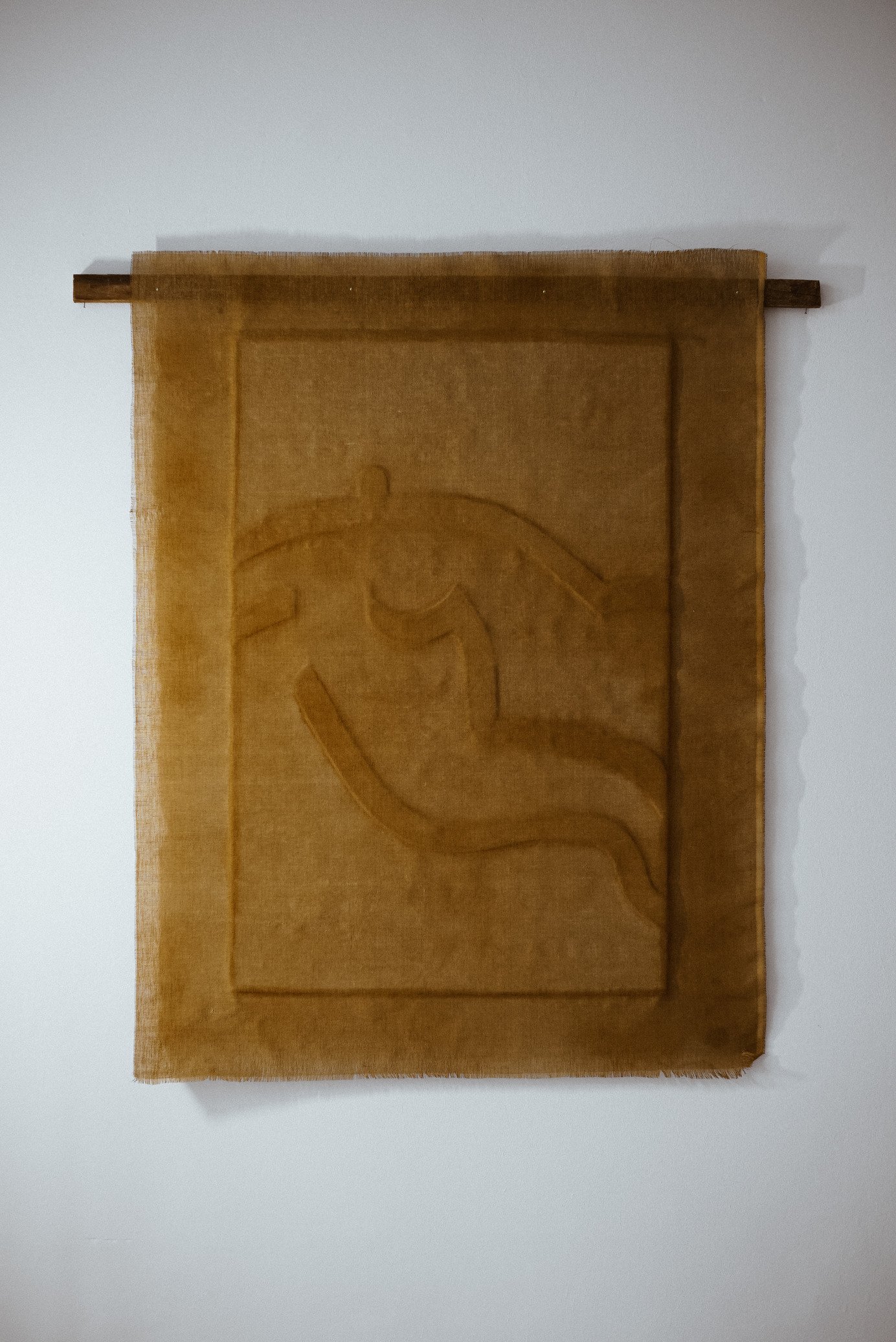
RECLINING NUDE, 2023, LINEN, SHELLAC, 132X144 CM
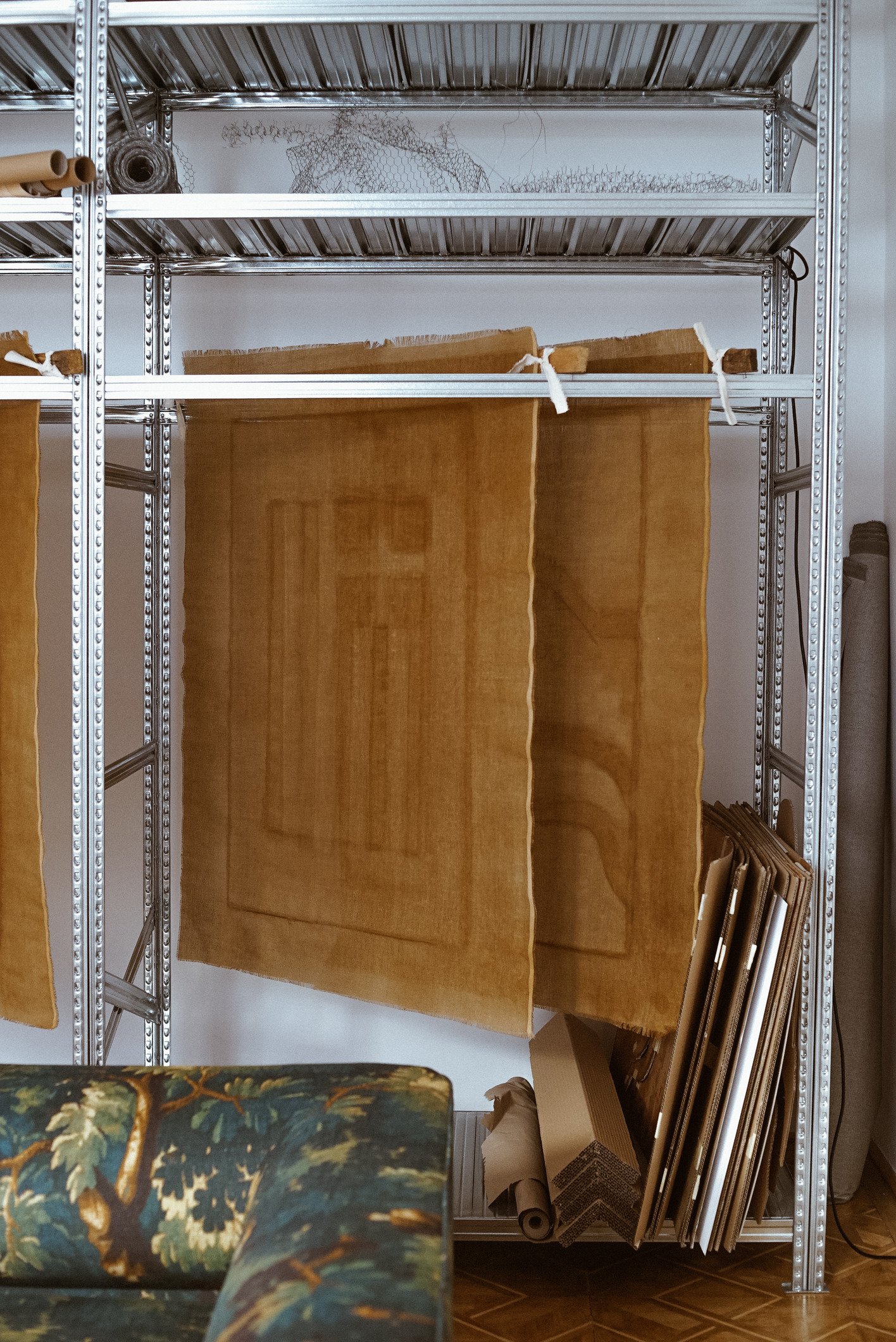

GREEK FLAG, 2023, LINEN, SHELLAC, 132X144 CM
COMMENTS ON WORKS
0001 2023 AC1GIRL WITH A DOVE2022OIL, PENCIL ON CANVAS120 X 155 CMGAÏA's inaugural diptych in the AC1 signifies a pivotal shift in the artist's trajectory, marking a departure from a challenging period towards a vibrant career resurgence. Profound transformations, both personal and professional, were catalysed when the artist chanced upon the Greek marble relief "Girl with a Dove" in an antique art book. A subsequent visit to the Metropolitan Museum of Art solidified this transformative encounter. The diptych, a testament to this evolution, reflects GAÏA's intuitive exploration of past references, interpreted in the contemporary context, encapsulating a delicate transition between worlds.
Bird flying
A bird soaring high in the sky, especially a dove, symbolises profound themes of freedom and rebirth. The dove, often seen as a messenger of peace, represents tranquillity and hope. When it takes flight, ascending to the heavens, it embodies the human desire to transcend earthly limitations and find liberation from constraints.
This ascent signifies a rebirth, shedding old burdens and embracing new beginnings. It's a potent metaphor for personal growth and spiritual awakening. The bird's flight reminds us that, like the dove, we too can rise above challenges, seek renewal, and ultimately discover the boundless possibilities that await when we embrace freedom and rebirth.
Passage
The word "passage" is a powerful symbol denoting transition and movement from one place to another. It encapsulates the essence of change, growth, and evolution in life's journey. Whether it's a physical voyage from one location to the next or a metaphorical shift in circumstances, a passage signifies progress and transformation.
It carries the weight of time, symbolising the continuous flow of experiences and the inevitable passage of moments. It reminds us that life is a dynamic process, urging us to embrace each transition as an opportunity for learning and renewal. In essence, "passage" is a symbol of the ever-changing, forward momentum of existence.
“Girl with a dove”, a Greek marble relief
Dating back to around 450 B.C., the relief serves as a poignant grave marker for a young girl. Discovered on Paros Island in 1785, it's celebrated for its charming composition and delicate craftsmanship, utilising the island's translucent white marble.
The sculpture beautifully captures the child's tender farewell to her pet doves, with her unbelted peplos flowing open, revealing her stance in intricate folds of drapery. Skilled stone carvers, often from the marble-rich Cycladic Islands, possibly including the sculptor of this stele, congregated in Athens during the mid-fifth century B.C. to embellish the Parthenon, showcasing the era's artistic prowess.
Tyrian purple
Often hailed as the "royal purple", carries profound symbolic meaning deeply intertwined with the concept of "porphyrogennetos." This term underscores the exalted status of individuals born to reigning emperors in the Byzantine Empire. Tyrian purple, a colour of utmost exclusivity, was exclusively reserved for the imperial family, signifying not only regal authority but also divine favour.
The origins of this prestigious hue are equally captivating. It emerges from the secretions of murex snails in the eastern Mediterranean. The labour-intensive process of harvesting and extracting the dye rendered it exceedingly rare and costly, further cementing its connection with the elite.
Tyrian purple's link to Greece adds another layer of symbolism to the diptych. Its use traces back to the Phoenician city-states, notably Tyre, which maintained strong ties with Greece. In Greek culture, this colour symbolises luxury, power, and a profound connection to the divine. Additionally, Tyrian purple embodies themes of birth and rebirth, as the dye's creation involves a transformative process, mirroring the enduring symbol of imperial prestige, opulence, and the cyclical nature of life.
0002 2023 AC1REBIRTH2022OIL, PENCIL, INK ON CANVAS120 X 155 CMHuman in a shell / womb
The symbolism of a human within an eggshell carries profound connotations of purity and rebirth. The eggshell, traditionally seen as a delicate and pristine vessel, represents a protective cocoon akin to a womb. This symbolism is deeply ingrained in various forms of art throughout history.
In visual arts, the eggshell often features in religious and mythological contexts, signifying the potential for spiritual awakening or the birth of a new beginning.
Moreover, the eggshell's fragility and potential to bring forth life link it to themes of vulnerability and transformation. Artists have used this symbolism to explore concepts of renewal, purity, and the emergence of the human spirit, making the eggshell a powerful and enduring motif in the world of artistic expression.
The symbolism of a human within an eggshell, representing purity and rebirth, resonates in art history. In Frida Kahlo's "The Broken Column," her shattered body within an eggshell-like corset reflects her pain and the potential for healing and renewal. Similarly, Salvador Dalí employed the egg as a motif in his surreal works, suggesting the birth of new ideas and dreams.
Rebirth
In history and art, "rebirth" embodies not only a historical resurgence but also a personal and creative transformation. Historically, the Renaissance's cultural revival (14th to 17th centuries) symbolised the reawakening of classical wisdom, sparking a flourishing of art, science, and humanism.
In art, "rebirth" signifies the Renaissance's revival of ancient aesthetics, exemplified by luminaries like Leonardo da Vinci and Michelangelo. They breathed new life into their work, celebrating human potential and beauty while breaking away from medieval conventions.
Beyond this historical context, "rebirth" resonates with personal transformation. It's the fusion of tradition and contemporary approaches, a fresh start that embraces growth. Artists continually reinvent themselves, incorporating past influences into innovative creations. This concept mirrors the broader human journey—where rebirth symbolises renewal, resilience, and the cyclical nature of life, both in history's grand tapestry and in the individual pursuit of self-transformation.
Dove
The dove, a universally embraced symbol of peace, love, and hope, holds profound historical and cultural importance, especially in art. In religious depictions, the dove often embodies the Holy Spirit, conveying purity and divine guidance, evoking a sense of spiritual serenity.
In the classical world, including ancient Greece and Rome, doves were linked to love and devotion, associated with goddesses like Aphrodite and Venus. This connection endowed them with an enduring symbolism of affection and tenderness.
Within the history of art, doves have graced various forms of expression, from classical sculptures to Renaissance paintings, as messengers of serenity and reconciliation. One notable example is the Greek stele gravestone titled "Girl with a Dove," which beautifully captured the innocence and gentleness of both the young girl and her feathered companion (used as a reference for the diptych).
Additionally, Picasso's "Child with a Dove" marked a pivotal moment in his career during the transition from his Blue Period to Rose Period. This iconic painting exemplifies how the dove's symbolism extends beyond the visual arts, influencing artistic movements and reflecting humanity's enduring yearning for harmony, love, and tranquillity. It's a testament to the dove's timeless significance in the world of art and culture.
PICASSO, CHILD WITH A DOVE, 1901. COURTESY OF WWW.PABLOPICASSO.ORG0003 2023 AC1TWO OF CUPS 2085TWO OF CUPS 1466 2023OIL, SHELLAC ON CANVAS120 X 155 CMIn the diptych "Two of Cups," a narrative unfolds about a transformative lovers' connection. The cups in the shape of Greek amphorae symbolise shared emotions between a divine feminine and masculine. The artist employs a technique of creating a patina by rubbing the canvas and working layer by layer, representing emotional depth and accrued wisdom. The chosen burnt sienna colour evokes earthy tones and ageing as an inevitable process, metaphorically expressing dissolution in both earth and love.
Two of cups
The Two of Cups in tarot symbolises the harmonious union of two individuals, often representing love, partnership, and emotional connection. Its connection to art can be drawn through the cups' resemblance to ancient Greek amphorae, which were primarily used for storing wine.
In ancient Greece, wine held a profound symbolic significance. It represented the sacred essence of life, akin to blood, and was integral in various rituals and art forms. The Dionysian cult celebrated wine's transformative power, associating it with rebirth and ecstasy.
Artistically, this connection to wine as a symbol of lifeblood and transformation is evident in classical Greek pottery, where amphorae were adorned with intricate scenes. These vessels often depicted the stories of gods and heroes, blending art with spirituality.
Furthermore, artists through the ages have explored the theme of love and partnership, echoing the symbolism of the Two of Cups. From ancient Greek vase painting to Renaissance masterpieces, the portrayal of harmonious relationships and emotional connections has been a recurring motif in art, underlining the enduring human quest for love and unity.
Two of Cups from the Rider - Waite tarot deck.
Burnt Sienna
In art, burnt sienna takes on a role that transcends its warm, earthy tones. It embodies not only stability and a profound connection to nature but also serves as a versatile tool in an artist's palette. The roots of this colour trace back to sienna, a pigment drawn from the Italian region of Siena, directly from the earth itself. Through a transformative process of heating, burnt sienna emerges, offering deeper reddish-brown hues that evoke the essence of sun-baked landscapes and ancient rocks.
For the artist behind this painting, burnt sienna holds a special significance. Inspired by the rich heritage of ancient Greek pottery and the landscapes of the Cycladic islands, this hue becomes a bridge between tradition and contemporary expression. It captures the timeless bond between humanity and the natural world, infusing the artwork with a sense of grounding and connection that resonates across centuries.
0008-0013 2023 AC1CONTEMPORARY MUMMIES2023SHELLAC, LINEN132 X 144 CMGAÏA introduces a distinctive "Contemporary Mummies" technique, utilising shellac and raw linen. Through this technique, she constructs a narrative that conceals the underlying object while simultaneously revealing its essence.This intentional balance between revelation and concealment mirrors the intangible nature of imagination, inviting viewers to consider the boundaries between the seen and unseen. The process becomes a meditative act, with colour and form dissolving to provide room for contemplation.
This innovative approach is used for a series inspired by the landscapes of the Cycladic islands. The resulting imagery captures everyday scenes, alternating between distant views and intimate perspectives, fostering an interplay between the tangible and elusive elements.
Mummy brown
Delving into the essence of brown leads us to the very core of existence. It's the colour of the earth beneath our feet, a symbolic abyss we journey toward throughout our lives. Brown possesses an intriguing allure, drawing us in with its depth. In the world of art, it manifests in the enigmatic shade of mummy brown, a pigment created by grinding mummies in ancient Egypt, blending life and death into a single hue.
Mummies themselves carry symbolic weight, representing the mysteries of life and death, and the human quest for immortality. GAÏA'S use of mummy brown and raw linen forms a captivating narrative. Concealing the underlying object while revealing its essence mirrors the nature of imagination—a concept intangible yet deeply felt. It invites viewers to explore the boundaries between the seen and unseen, touching upon the elusive and ethereal aspects of human experience. The power of transformation.
Sunrise and sunset
The genesis of GAÏA's exploration lies in her journey through the Cycladic islands in Greece. The series pays homage to the unique hues present just after sunrise and before sunset, aptly named "mummy brown." This particular shade symbolises the earth beneath our feet, embodying a symbolic abyss traversed throughout life. The inherent depth of brown adds a compelling element to the narrative.
Mummy brown is featured in the palettes of renowned artists. Alma-Tadema employed it for historical scenes like "The Finding of Moses," and Delacroix used it to add depth to his vivid canvases, including "Liberty Leading the People" (picture above). Despite its origins, mummy brown left an indelible mark on the works of many influential artists.



